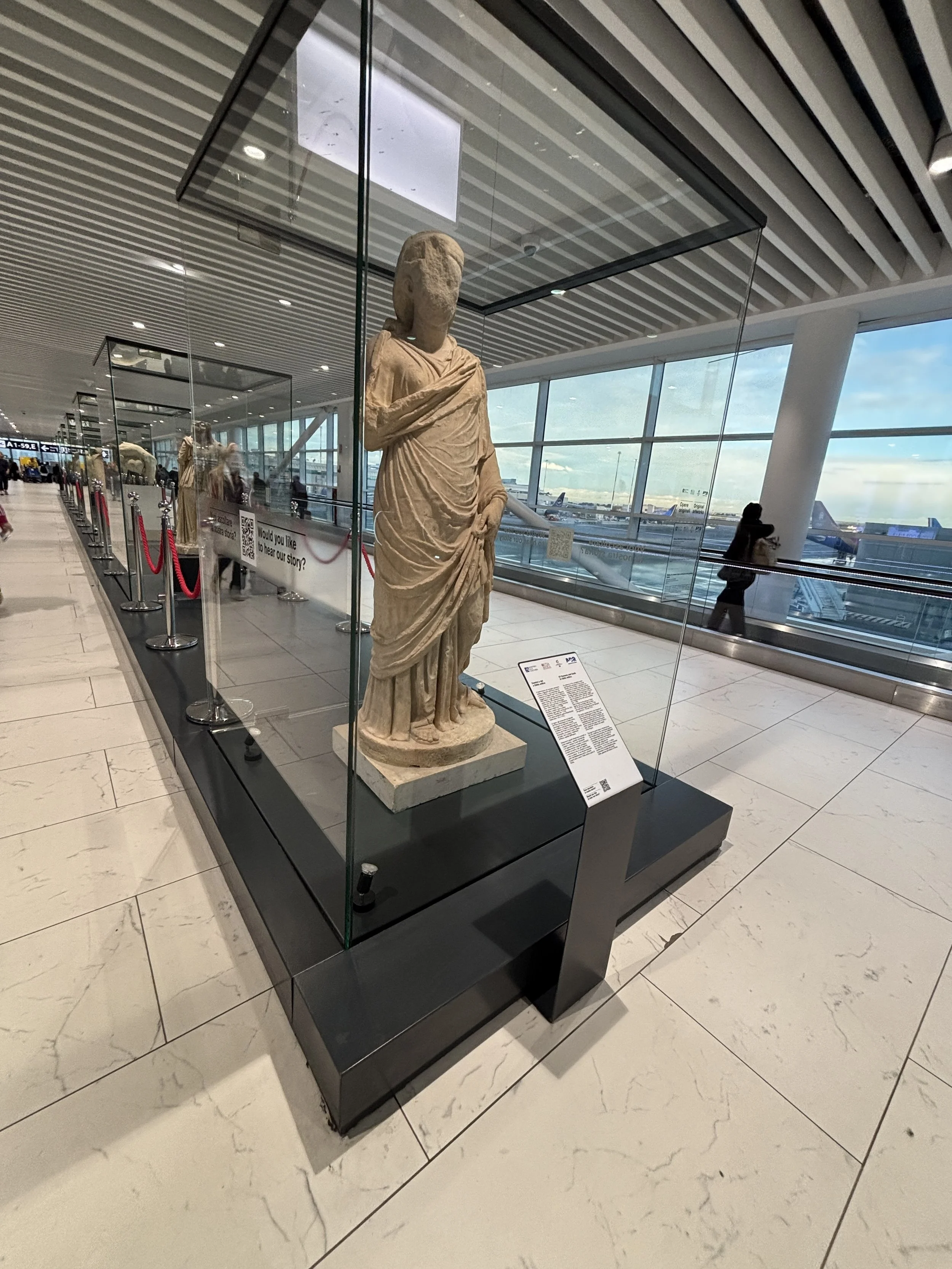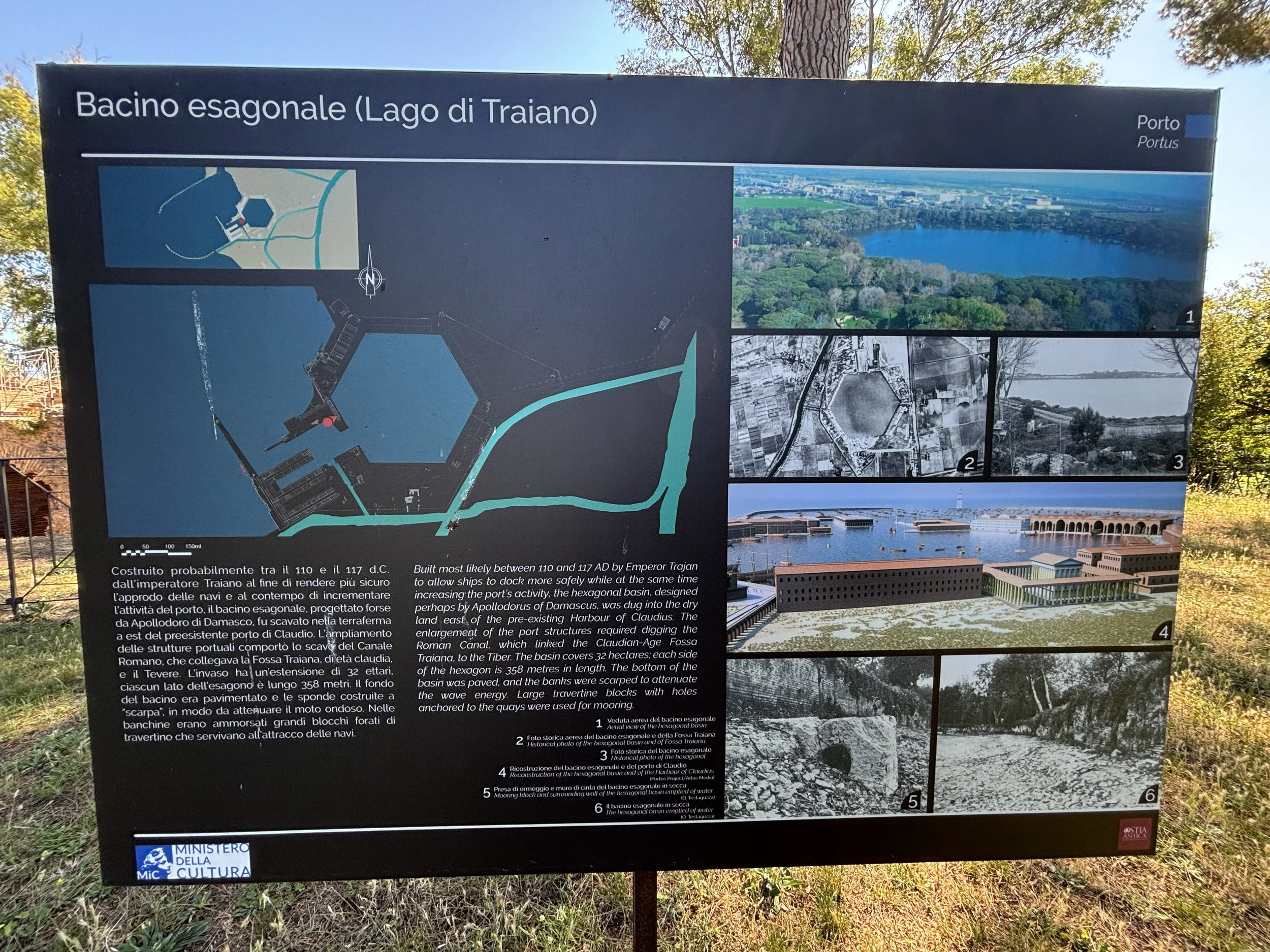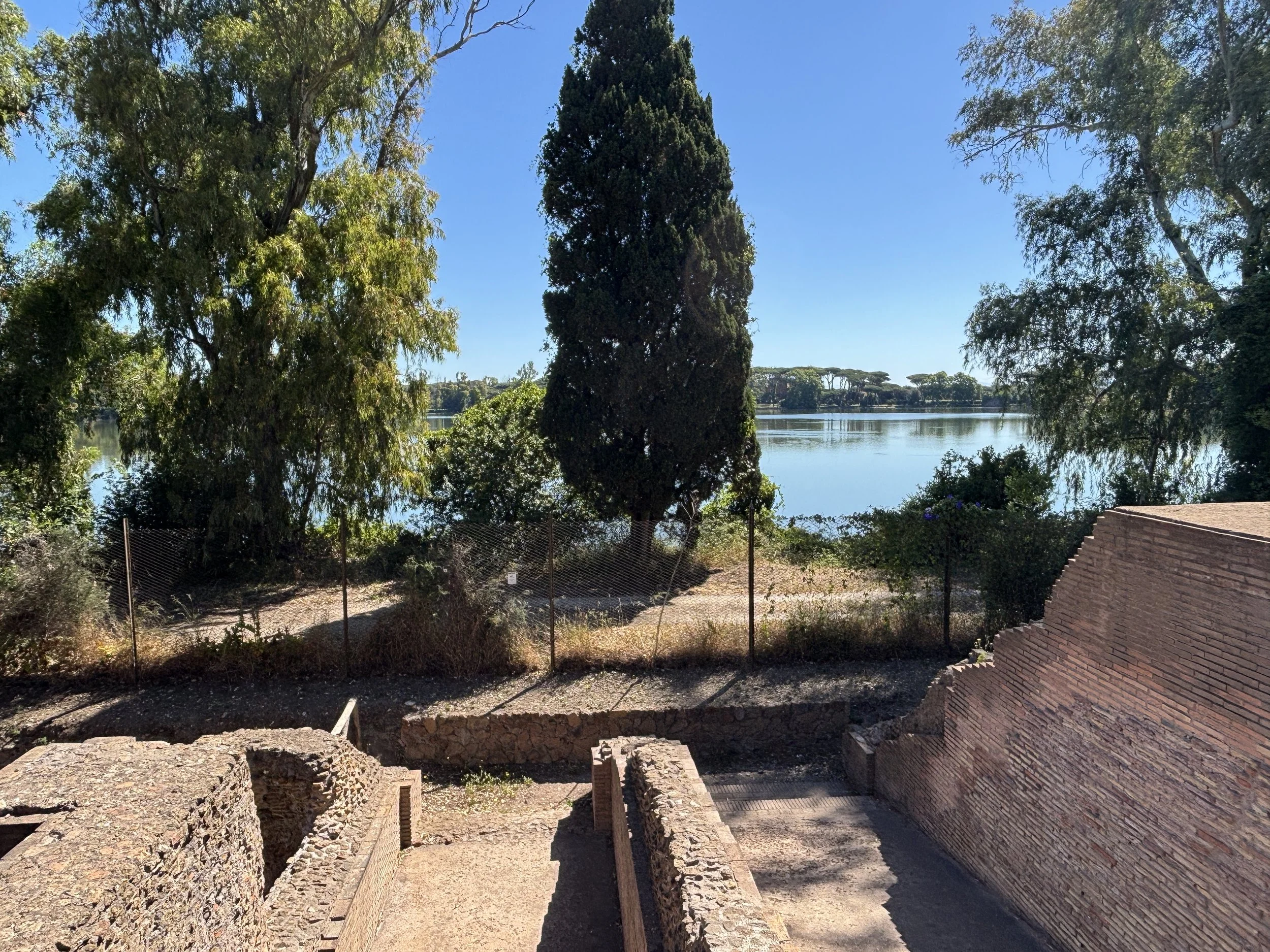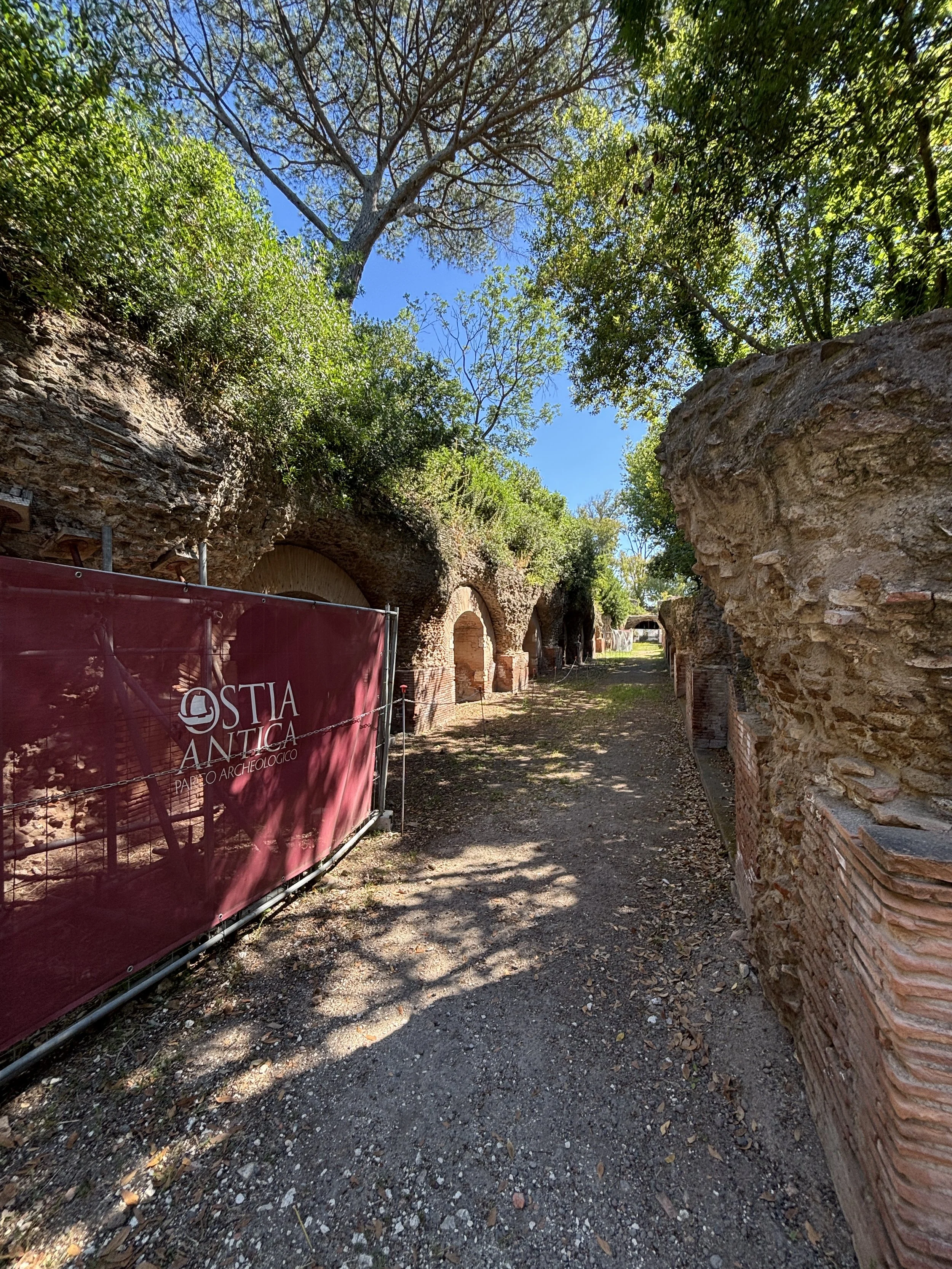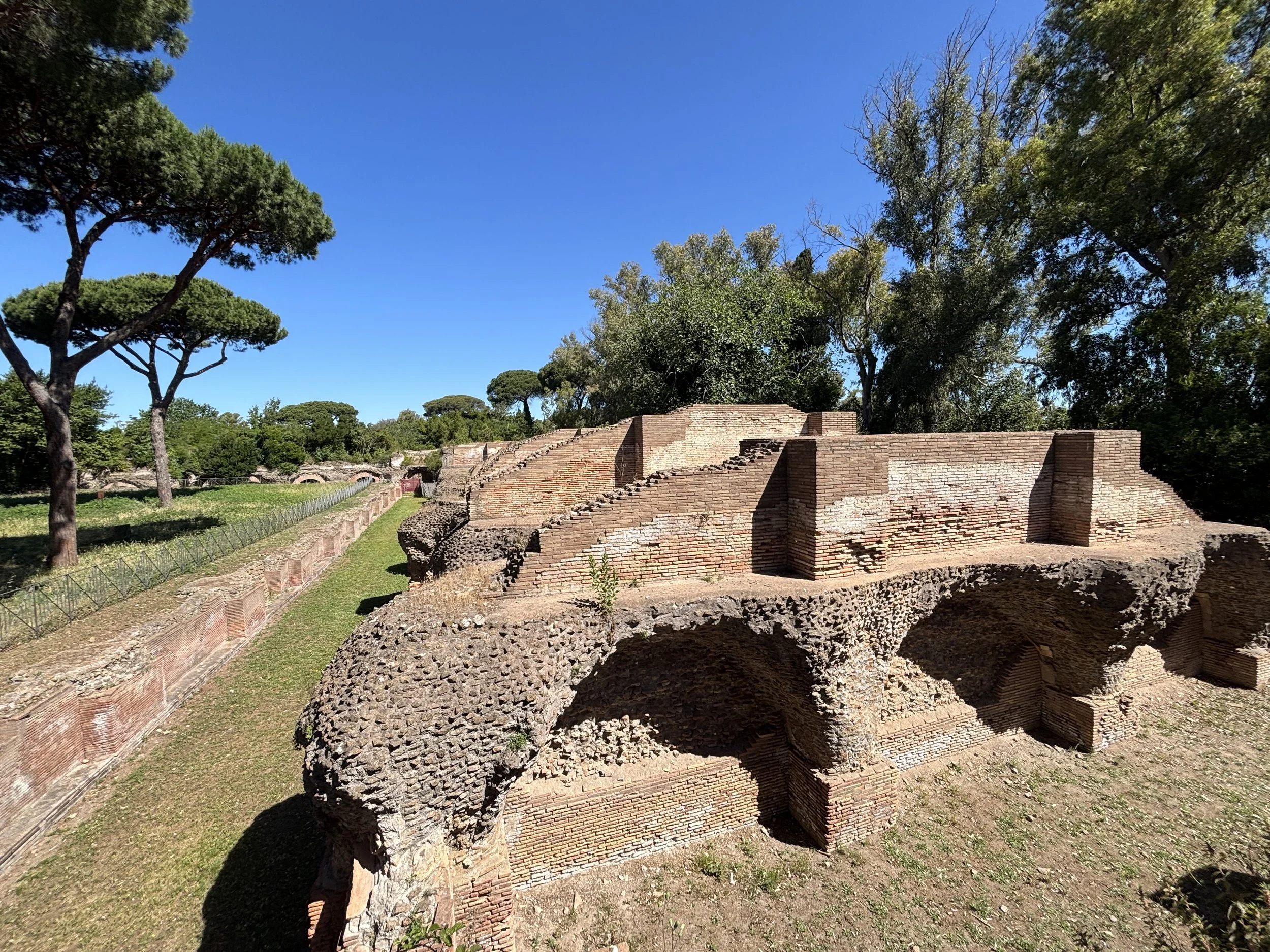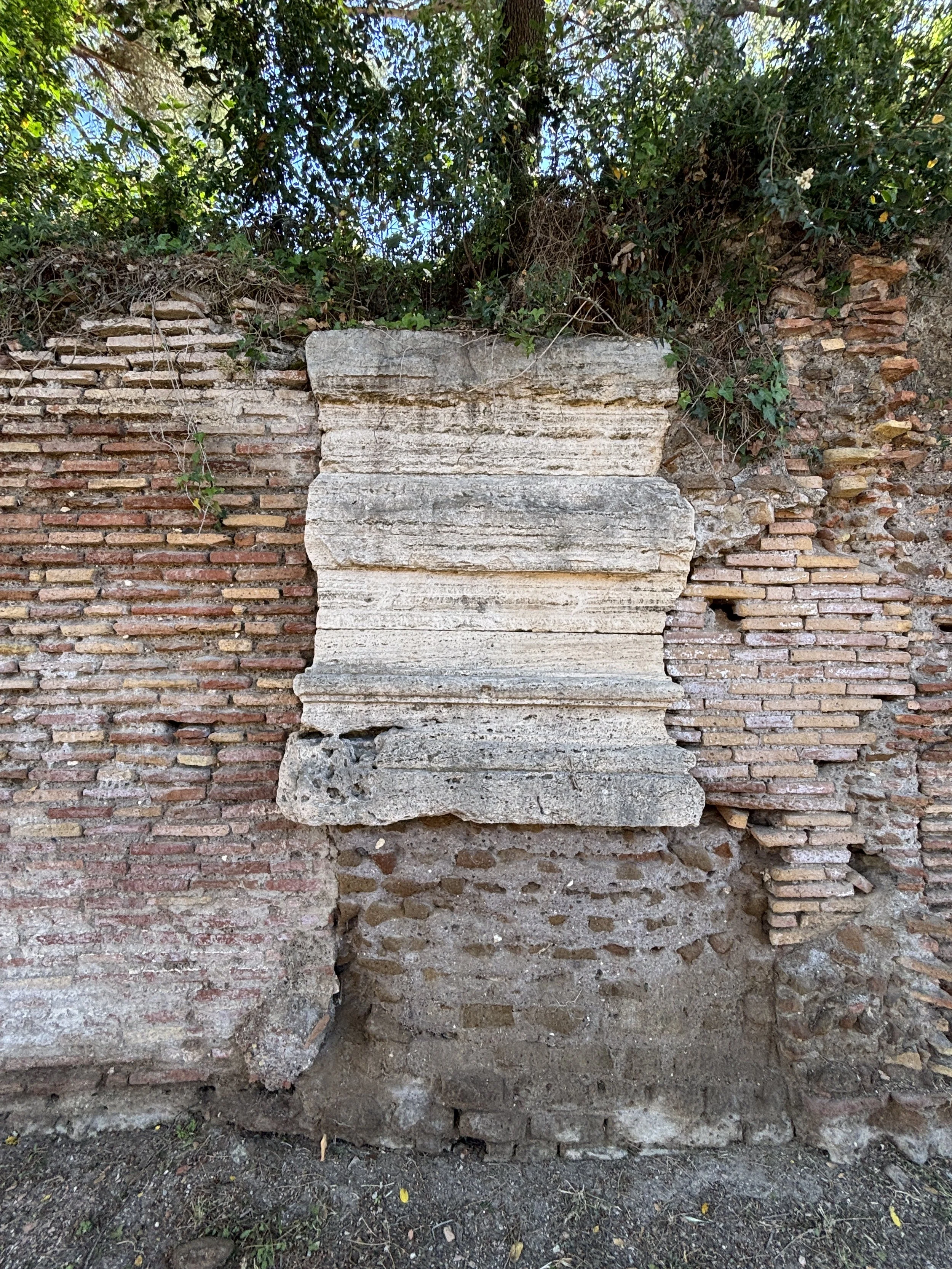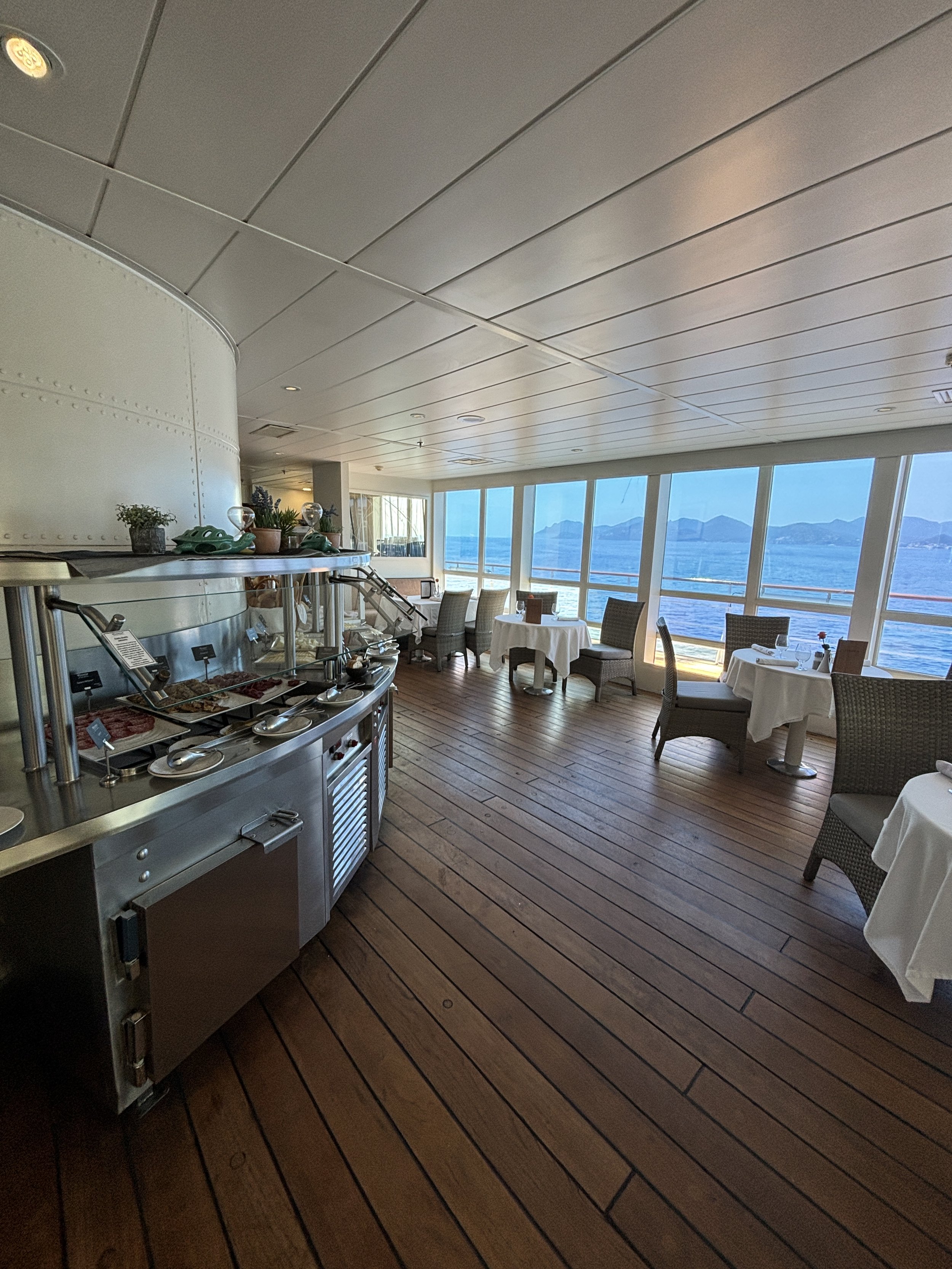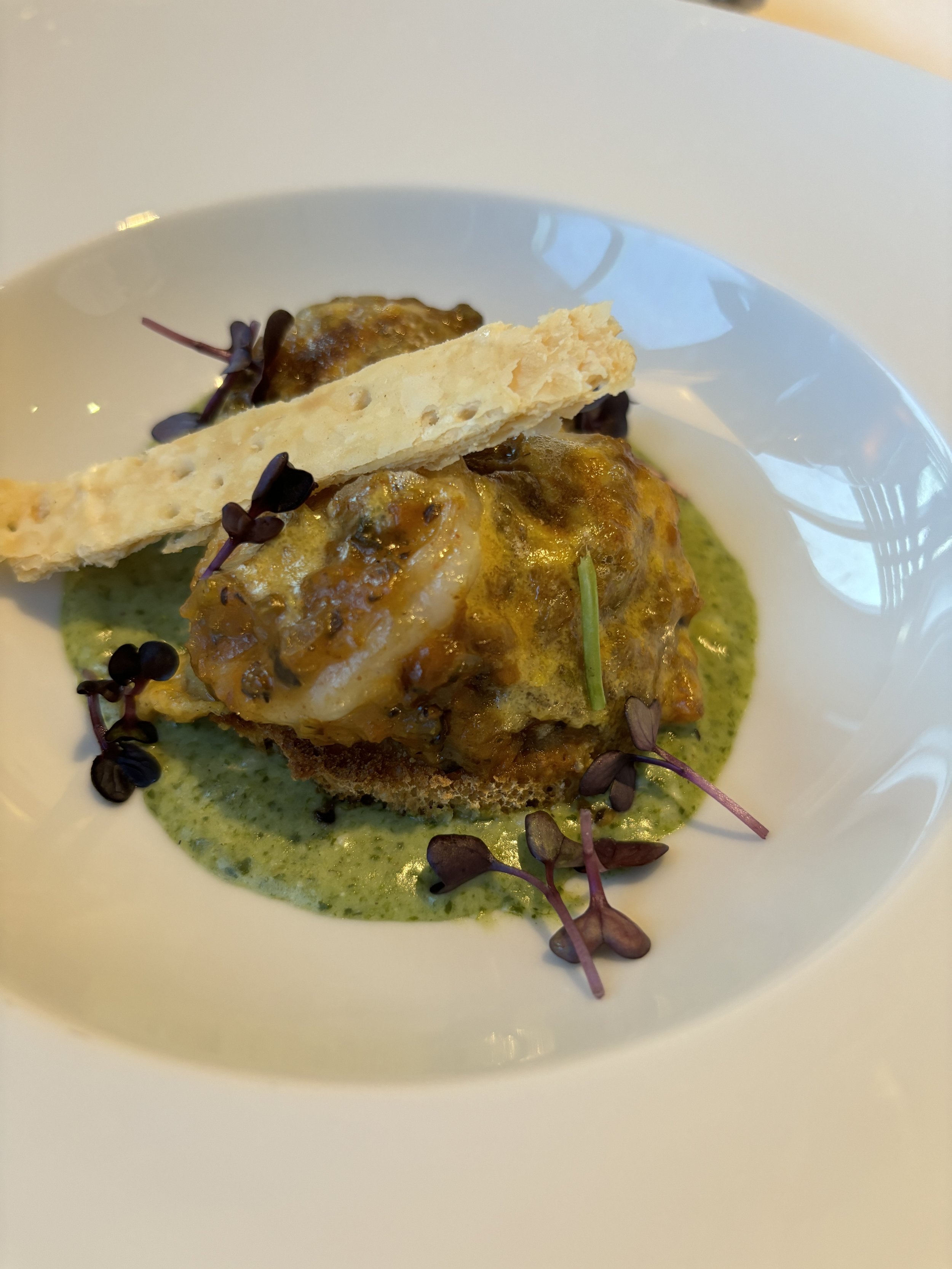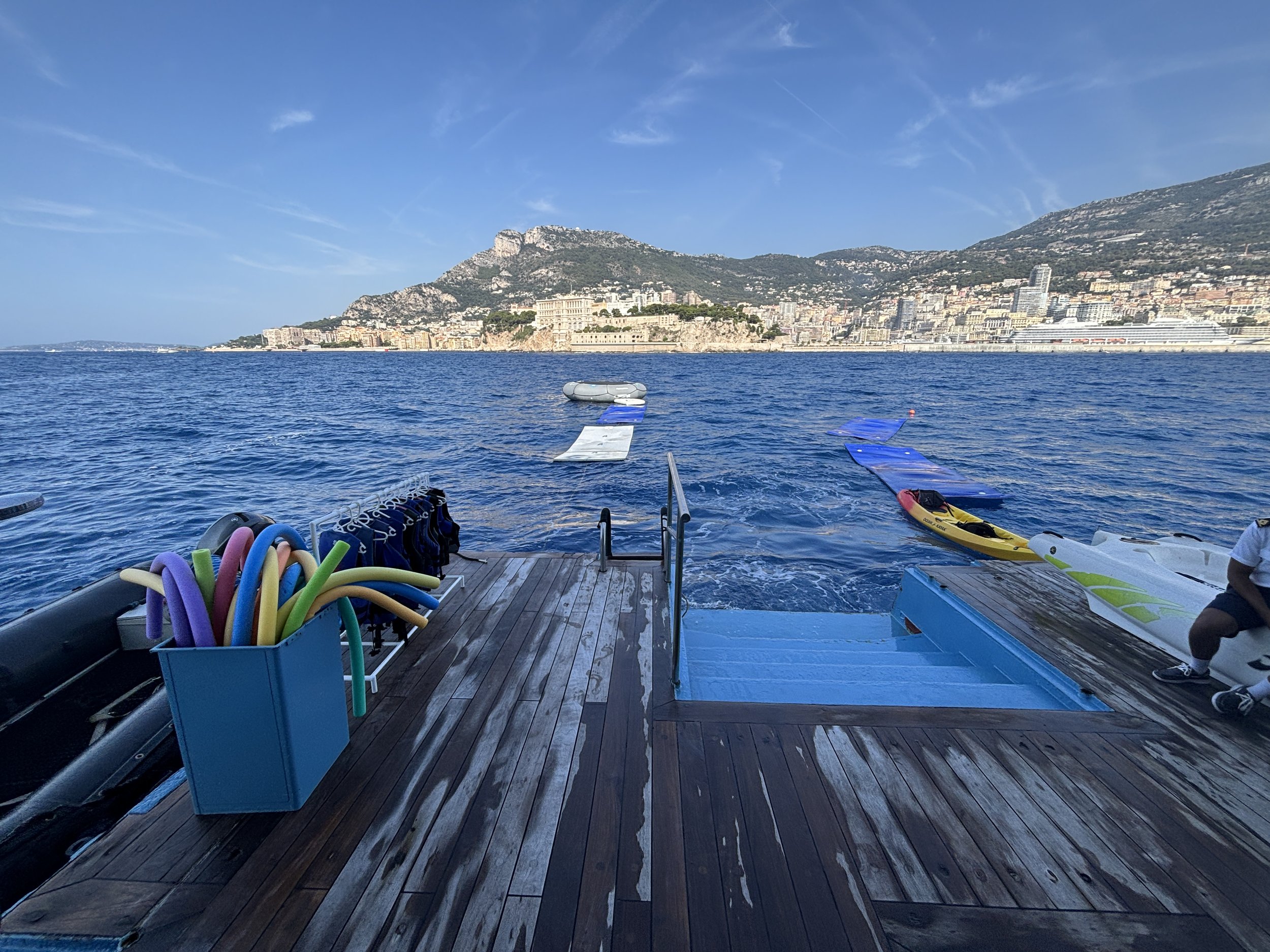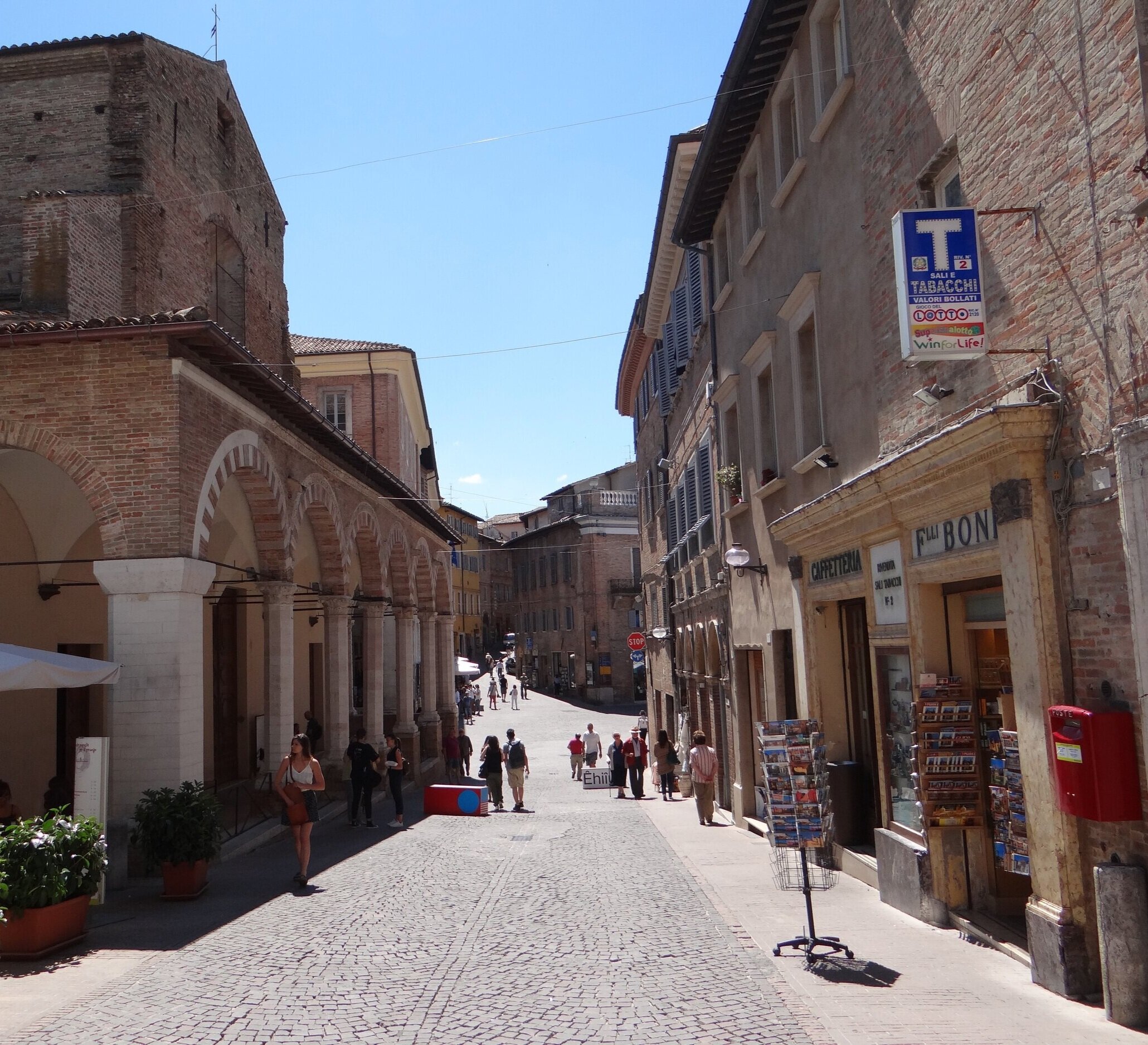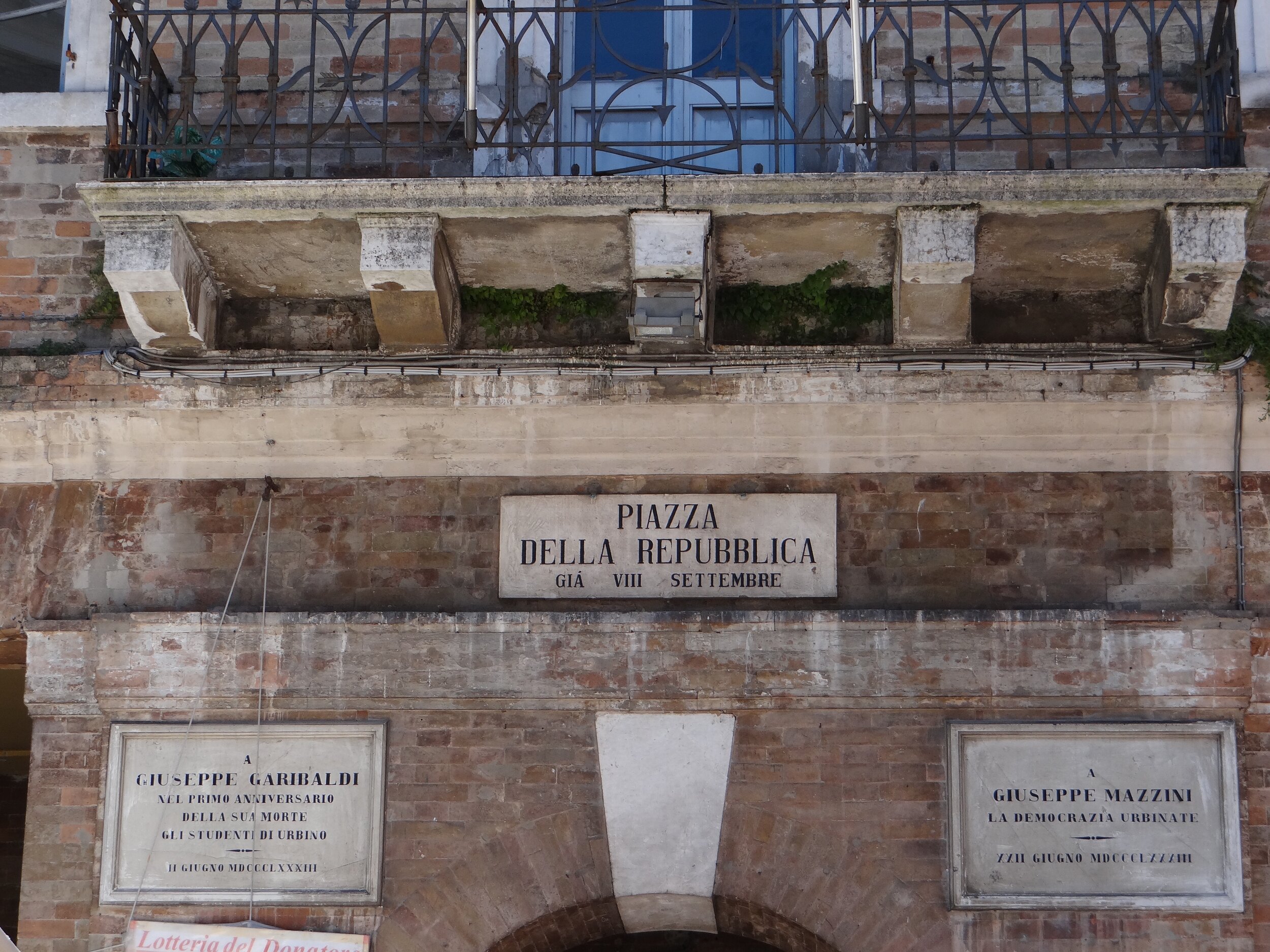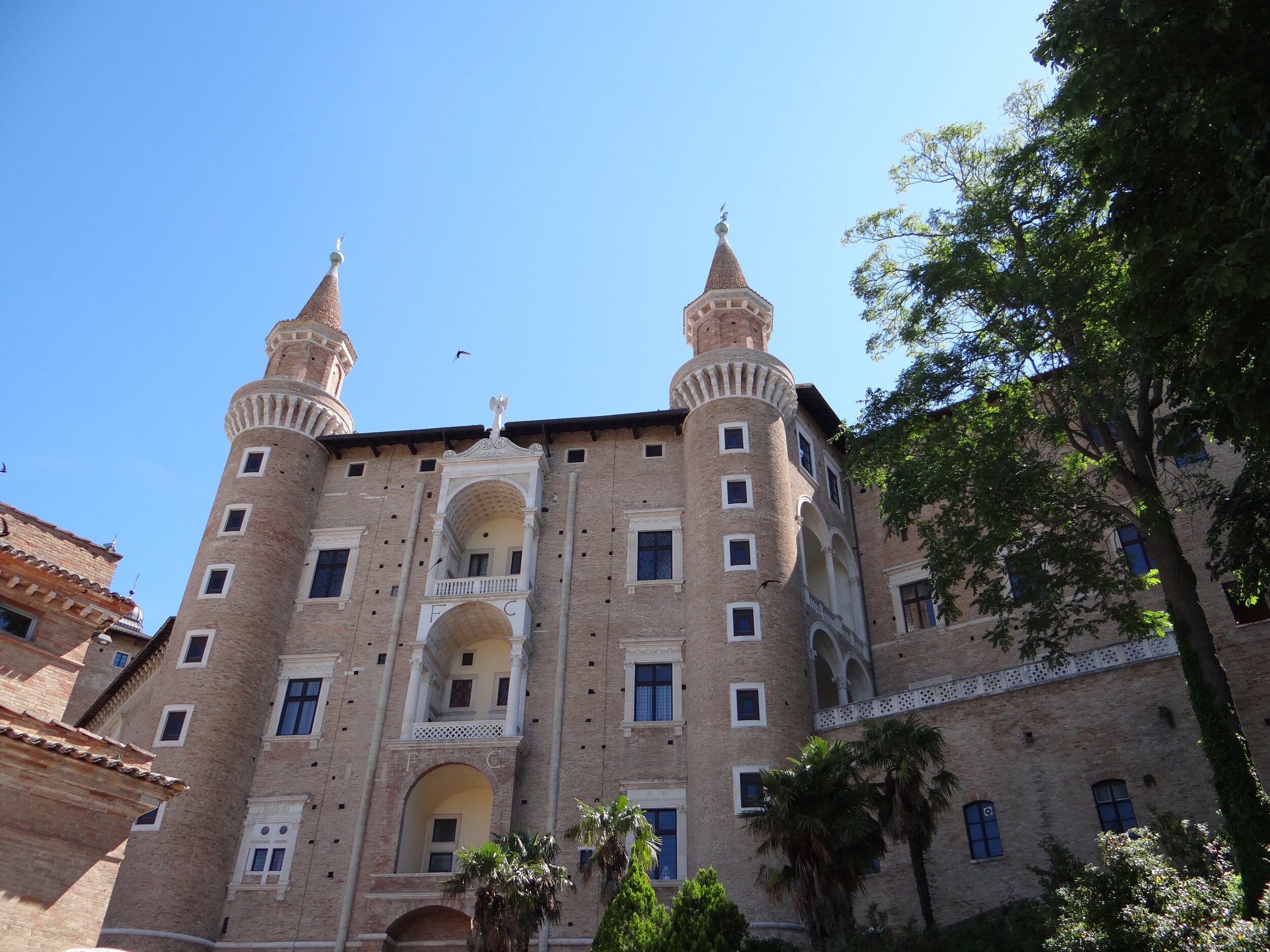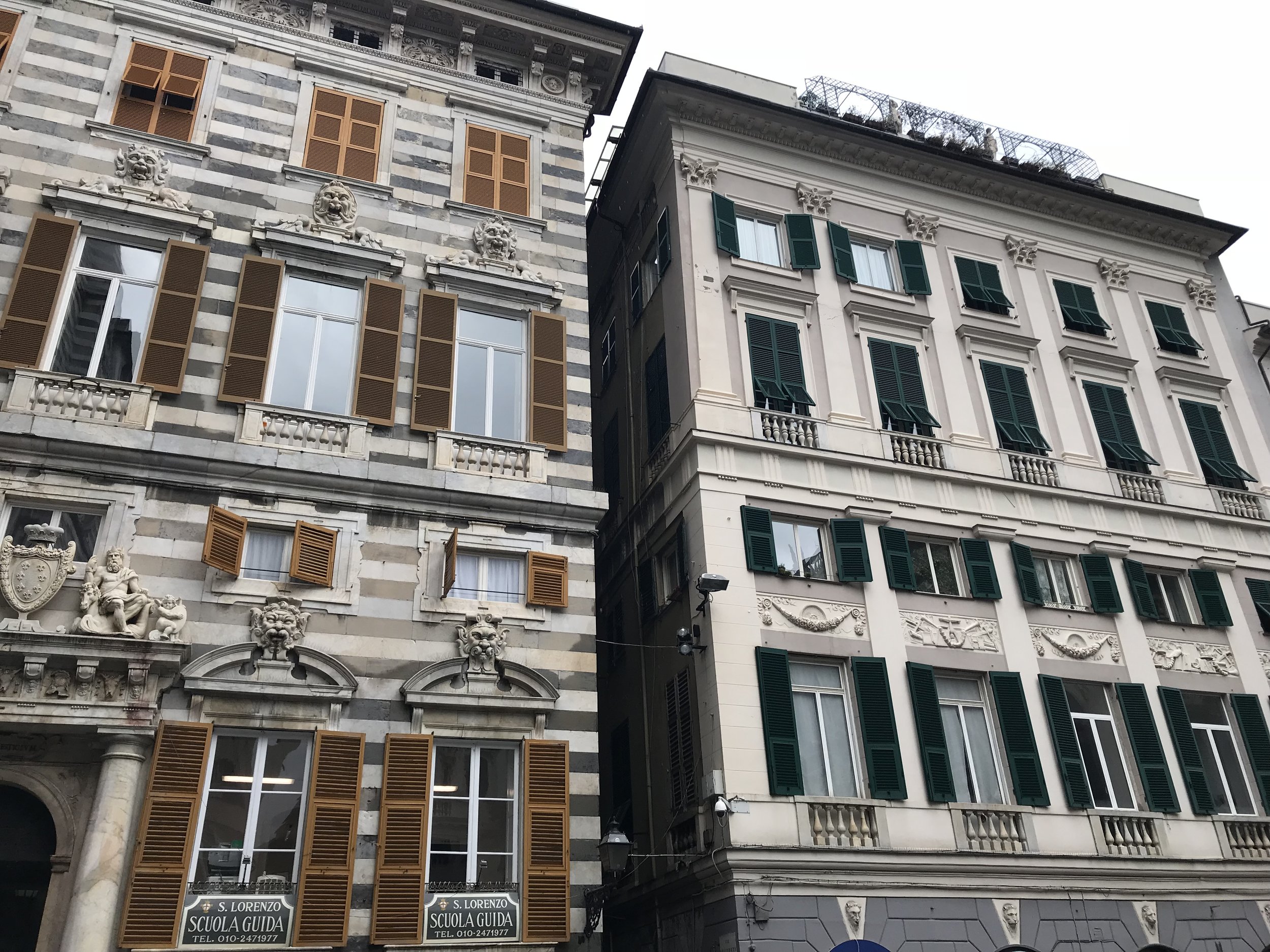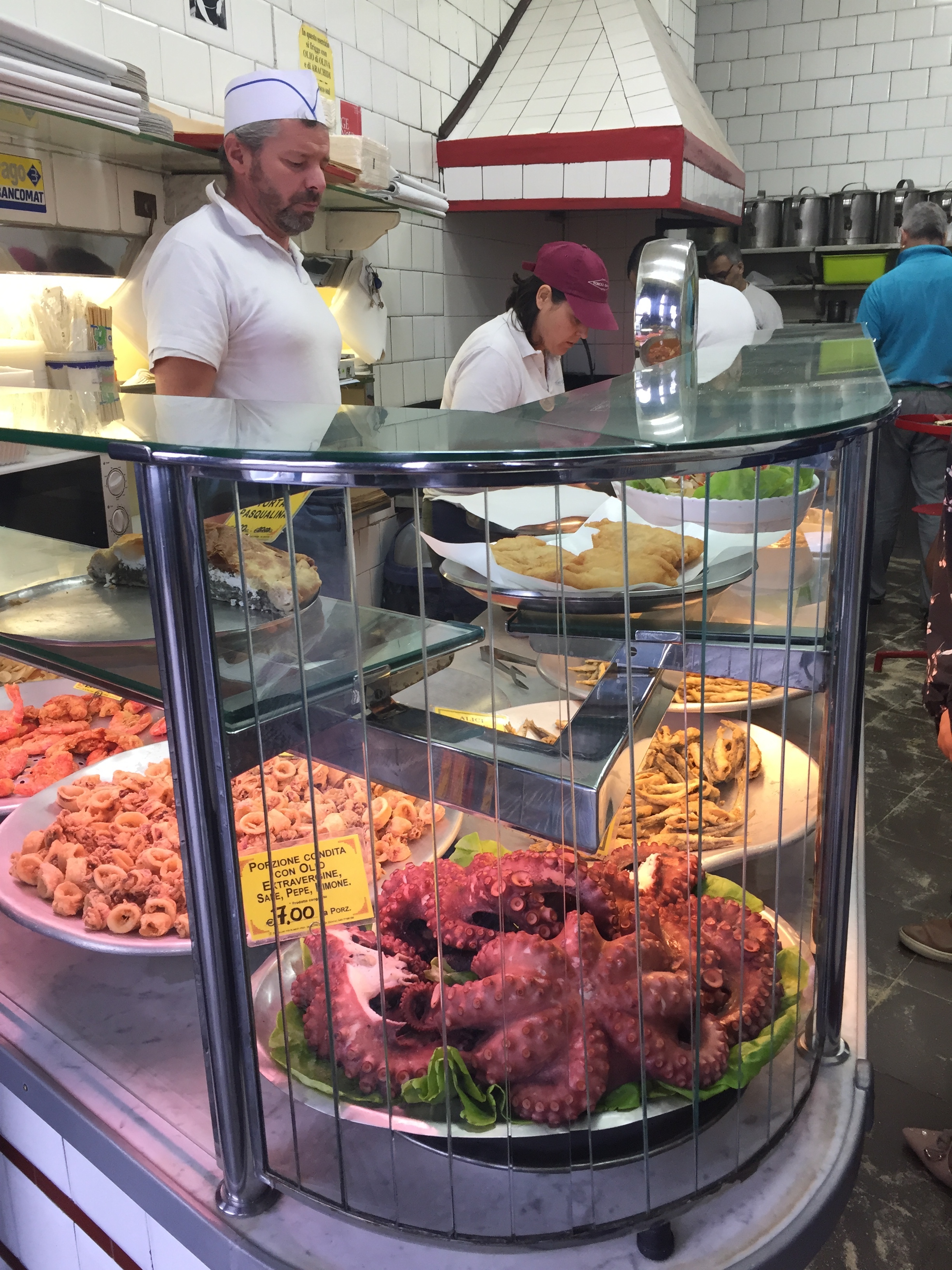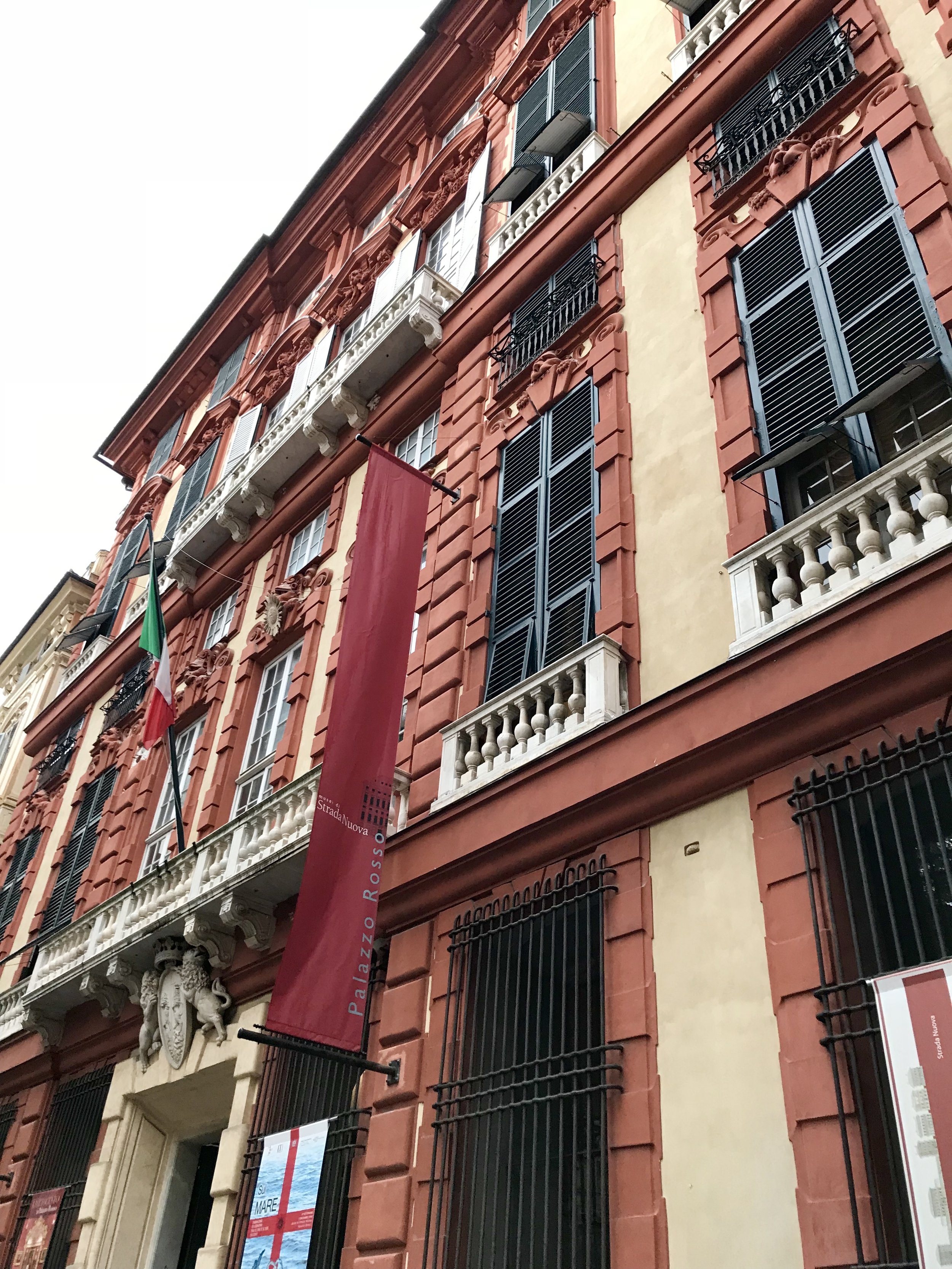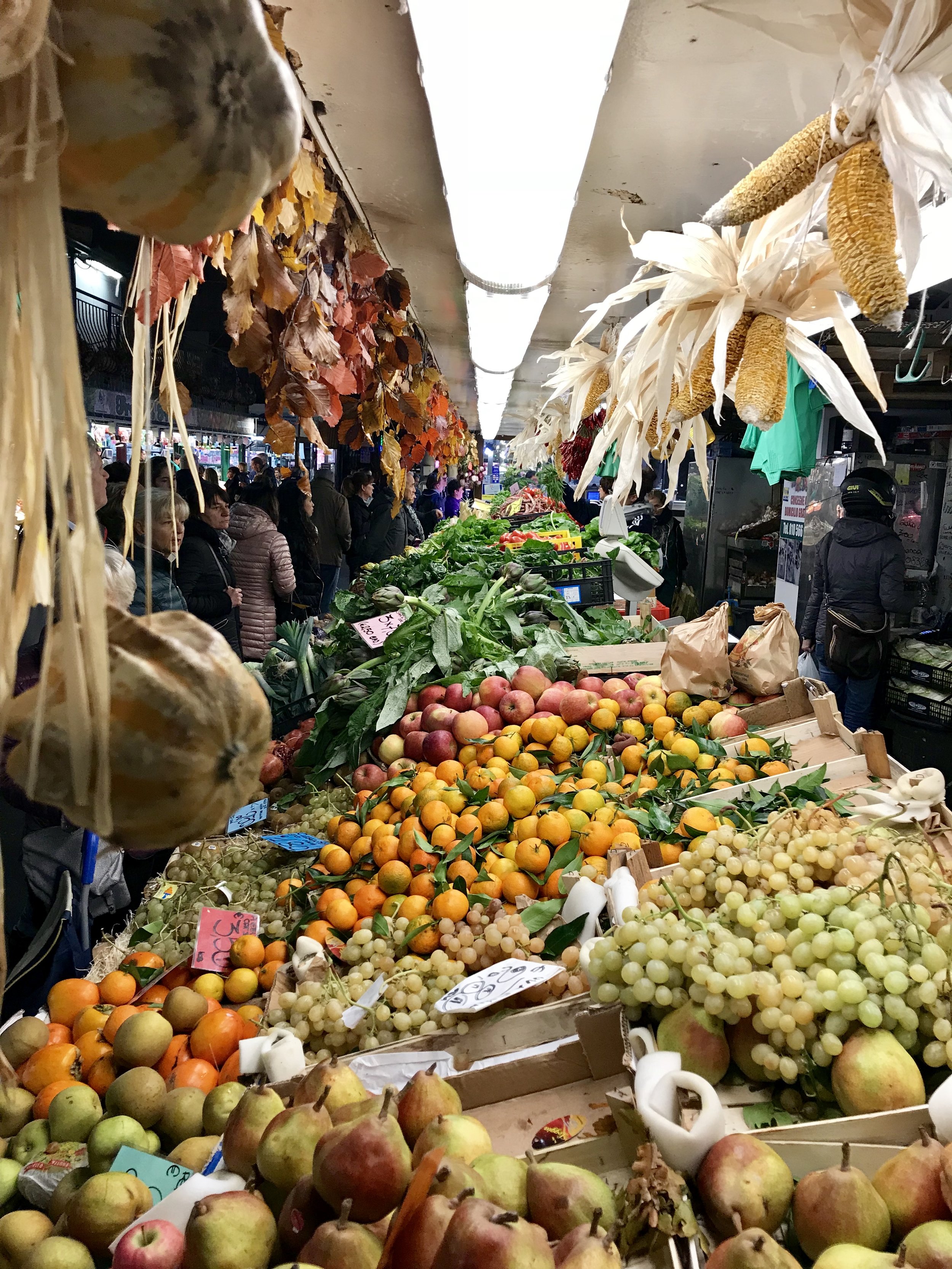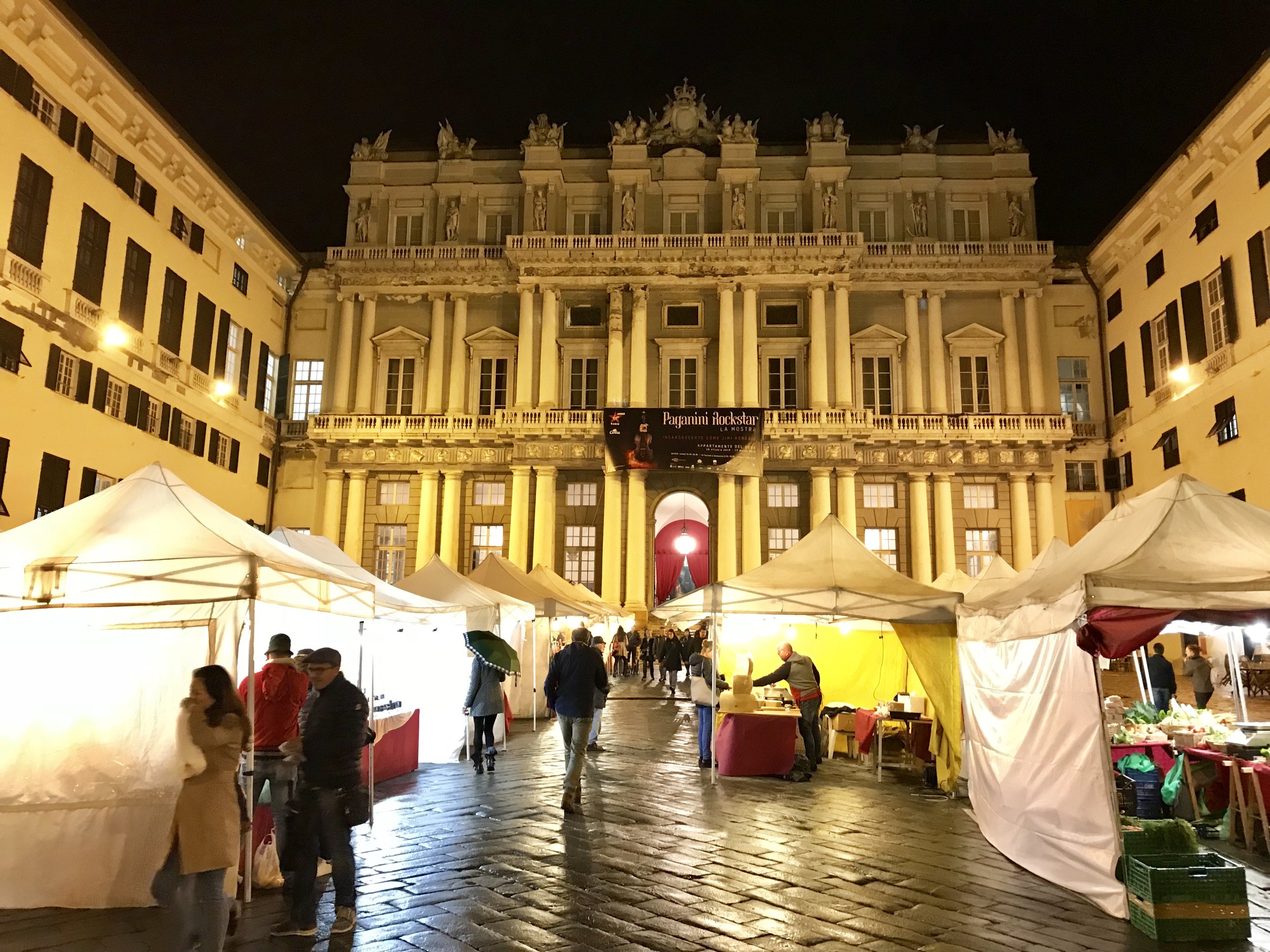Things to do around Rome on a Fiumicino stopover: visit Portus
Leonardo da Vinci-Fiumicino International Airport (FCO) is not just Rome’s main airport, but also a major air hub and the main base of flag carrier ITA Airways.
Fiumicino airport showcasing local heritage
There is, thus, a significant number of people that transit through Fiumicino every day, but I guess not that many of them are aware that, provided the stopover is long enough, they have the chance to visit a top archaeological site less than a mile away: the Ancient Roman harbour of Portus.
Remarkably, not unlike Fiumicino today, back in its time Portus was Rome’s major transportation hub.
The Romans may have built the greatest empire the Mediterranean has ever seen, but the city in Rome, while close to it, is not quite on the sea!
In fact, Rome’s gateway to the sea was Ostia, at the mouth of the river Tiber and also not far from Fiumicino airport.
What remains of that ancient seaport, Ostia Antica, is now a major archaeological site.
However, Ostia started to silt up already in Roman times, so, in order to ensure continued access to the sea and to accommodate the growing logistical demands of an expanding empire, during the reign of Emperor Claudius (1st C. AD) the Romans built yet another port a bit further north: Portus.
Just as today’s major airport hubs, which are built part for function and part to impress, Portus was built with some pretty impressive features, including a massive hexagonal basin connected to the sea via a newly dug canal and a number of support facilities that encapsulated the state-of-the-art technology of its time, to load, unload and store goods and forward them to nearby Rome and the rest of Europe.
Ancient Portus was, in many ways, a purpose-built, avant-la-lettre multi-modal transport hub!
How to get to Portus Archaeological Site from Fimucinio Airport
While close to each other, both archaeological sites are, however, not physically connected, so, unless you a a total hardcore Roman history fan and have an extremely long stopover and a large budget for taxis, I would say it is not very practical to visit both in one go.
Of the two, Portus is the closest to the Fiumicino terminals and, as far as I am aware of, the only one that is relatively easy (with some nuances as we shall soon see) access in public transport.
You can, of course get a taxi or Uber (the driving time is quite short), but pricing can be quite high, even if the distance is short. You can expect to pay on the order of €30 or more for each leg of the ride.
Since my ITA Airways stopover at Fiumicino was around 6 hours long, I opted to visit the archaeological site of Portus only and, to add, a bit more thrill to the adventure, to do so by public bus.
I even considered briefly the idea of walking to the archaeological site and, while this is not entirely unfeasible in terms of distance, I was discouraged from doing so because the route is traversed by several motorways, roads and undeveloped land, which would make it rather unpleasant or even plain dangerous.
So, it was going to be by bus.
The first thing to do, though, was to leave my bag at Fiumicino’s luggage storage facility. This is located right outside the arrivals area at Terminal 3. There is a flat fee per item, whether you leave it for 10 minutes or 24 hours and regardless of the size or weight. The system is quite efficient, though.
So, after the luggage was sorted, it was a matter of finding the right bus.
I went to ask to the tourist office at the arrivals area of the airport and, while they didn’t appear to be very sure about the optimal way to get to the Portus Archaeological Area from the airport, they suggested me two options:
To get a free airport shuttle that stops at the “Museo delle Navi Romane”, a small museum located just outside the airport perimeter which houses two Ancient Roman ships which were found in the area. In addition to being free, this option had the added bonus that it allowed me to visit the said museum, a good complement, I guess to the visit to the ancient port. The problem, though, is that the “Museo delle Navi Romane” is still some way off the Portus Archaeological Area. I would still need to walk two thirds of the way or get a taxi, which, while fast and convenient, would be quite costly per km.
To get a local bus which stops near the entrance to the Portus Archaeological Area. Frequencies are not great, so I had to time my visit carefully to be sure I had enough time to be back to the airport with enough time to retrieve my luggage and catch my flight.
So, all things considered, I opted for the latter option. The challenge, however, was to find the bus stop and make sure I got on the right bus, since several local lines stop at the airport. The fact that I speak Italian was rather helpful and would have been quite another story if I hadn’t (in fact, there were a couple of instances during the bus ride of people that found themselves going in the wrong direction!).
I must say that the bus option, while cheap (around €2 each way), it is not that convenient. First, the bus first heads east, makes a detour through downtown Fiumicino, before turning again east and backtrackig towards Via Portuense. The bus stop that is closest to the entrance to the only entrance to the Portus Archaeological Area is the one in front of the local cemetery. The bus then continues on to the nearby industrial areas.
It takes about 25 minutes to complete all this loop, which is quite a lot considering some parts of the archaeological area are almost touching the airport perimeter, but such is the configuration of roads and public transport networks in the area. If you intend to go back and forth on the bus, it is advisable to buy both tickets at the airport (there is an employee from the public transportation company that can sell you the tickets and advise you on the best bus to take).
The bus arrived and departed at the advertised times, but there is about one frequency per hour, so better make sure you show up in time!
So, this is how I finally made it to the entrance of the Portus Archaeological Area, which is actually a huge outdoors area enclosed by. walls. There is a first guarded entrance and the ticket office some 300 meters further into the perimeter. The entry ticket costs €10.
Portus, the port of Imperial Rome: a bit of history
Portus was initially a project of Emperor Claudius, who initiated the artificial harbour’s construction around 42-46 AD. The original layout featured a large basin protected by massive breakwaters and a lighthouse.
Emperor Trajan undertook a major expansion some fifty years later, when it became known as Portus Traianus. This is when the hexagonal inner basin, an artificial canal connecting it to the Mediterranean and one of the iconic elements that have been best preserved to this day, was built.
The basin was lined with a sophisticated and extensive network of warehouses and other support infrastructure to facilitate the processing or merchandise, mostly grain from Rome’s North African provinces, on which the capital had grown dependent.
Portus remained in service for several centuries, but, as it happened with nearby Ostia, it eventually silted up as well. This, together with the massive trade disruption that followed the fall of the Roman Empire, led to its demise as a major maritime entrepot in the early medieval era.
What is left of Ancient Portus in 2025?
Ancient Portus is now firmly on dry ground, a couple of kilometres inland, so you will need a bit of imagination to guess the function of the different structures that are today visible throughout the Portus Archaeological Area. Fortunately, the site’s curators have thought about this and the whole area is sprinkled with signage which does a great job in explaining what is what and how every item would have looked like in its heyday.
The most distinctive element is, of course, the basin, whose perfectly hexagonal shape can be easily recognized, even in aerial pictures. However, I must say, it looks more spectacular from above than when you see it from ground level.
Also, it is not easy to get close to it. While I did not complete a walk around it (due to my time constraints), in the area of most interest (the western edge of the basin), you can only spot it from a few dozen meters away.
There are a few viewpoints from the top of the former Roman warehouse buildings. These are also an item of interest and are located next to a modern farmhouse.
The walk from the ticket office to the basin is actually quite nice if the weather is good (as it was the case!), since the path runs through an area of fields and forest lined with some ancient structures.
Also, the site doesn’t seem to be particularly frequented. At the time of my visit I was on my own and didn’t see any other visitor anywhere in this vast space until I started to make my way back half and hour later, and even then, I just came across half a dozen people in total.
I did manage to spot otters, though, as the fields around seem to be a bit marshy!
Most of what has been (partly preserved) is towards the west and southwest of the basin, so, I would say: go first see the basin to get a grasp of the scale of the place and then walk through what’s left of the warehouses and the sea-facing portico of Claudius.
My take:
Since I am one of those people out there that think daily about the Roman Empire, I think it is quite amazing to have the chance to see such a unique site during an otherwise unremarkable airport stopover.
Plus the site was quite pleasant (the great weather helped a lot in this) and totally not crowded, which was an added “luxury”.
Now, the not so great part: while very close to the airport, it is by no means easy to get there (unless you wish to spend a little fortune in taxis) and it requires quite a lot of conviction!
Also, while Fiumicinio airport has some references to Ancient history and heritage within its premises (see the picture at the start of this post), remarkably very little information is made available to travellers about the archaeological sites in the vicinity of the airport.
Overall: a rather underrated archaeological site, which, in my opinion, deserves much more attention than it gets!
In the footsteps of Napoleon on the island of Elba
Arriving to Elba on the Windstar Wind Surf
There is a tiny island off the coast of Tuscany where Napoleon Bonaparte was king for less than a year.
This short period of time, however, was more than enough to leave its imprint and more than two centuries later, the name of Elba appears inextricably linked to that of the emperor of the French and there are, indeed, quite a few sites on the island connected to this historical figure.
But you would be wrong to assume that Napoleon is all that the island of Elba has to offer!
In fact, even without the Napoleonic stuff, Elba is an amazing destination on its own right just on account of its natural and historical heritage. We had the chance to visit recently in the month of July (perfect summer weather!) and, while we spent less than 12 hours on it, I can say that it was one of the highlight stops of our Windstar Cruises sailing around the Western Mediterranean.
So, let’s see what awaits the visitor in Portoferraio, the capital of Elba!
By the way, please, note that, while Elba is relatively small, this post covers only a tiny part of it, there are also a couple of other notable settlements, like Porto Azurro, numerous beaches and some mountainous areas (which get to a height of more than 1,000 meters). So, I would not rule out another visit in the future!
What to do and what to see in Portoferraio, Elba
Our visit started in the port of Portoferraio, where our ship, Windstar Wind Surf, arrived in the early hours of the morning.
If you asked some generative AI to draw some postcard-perfect picture of a picturesque Italian Mediterranean historical port city, it would possibly come up with something similar to Portoferraio!
And the first one to greet us literally off the ship’s gangway was…Napoleon himself! as well as Cosimo de Medici, because, while the Buonaparte gets most of the attention nowadays, the island of Elba is also linked to another of the great names of European history, the Medicis, which controlled the island for some time in the 16th C.
As far as the public space is concerned, though, Napoleon is all over the place, with this effigy and other associated symbology being ubiquitous in Portoferraio.
The cruise dock was just within walking distance of the historical center of Portoferraio, so just a quick and pleasant stroll away from the main sights.
Portoferraio is located at the tip of a rocky cape at one edge of a bay on the central-northern shore of the island. The port and the old town are surrounded by a line of small ridges that give it a semi-circular shape, not unlike some sort of theater auditorium which leans towards the sea.
Adding to the natural defense provided by the hills, on the land side Portoferraio is enclosed by the walls of Forte Falcone, the hilltop fortress that dominates the old town.
So, given our limited time onshore, we skipped the shops and cafés around Piazza Cavour, the most commercial area, located right next to the quays, and opted to walk uphill across the old town towards Palazzina dei Mulini, which was Napoleon’s residence during this stay on Elba (he used also another mansion on the mountain side of the island as a summer residence).
This was not just out of interest for Napoleonic history, but also quite practical, since the museum-residence is located on the far side of the old town and the way there offers a chance to walk right through the center of town and also get some nice views from its upper side.
It gets uphill very quickly in Portoferraio. The whole town is built on the slopes of a hill and, as soon as you get a couple of streets off the main commercial street it’s all small narrow streets, sometimes turning literally into stairs due to the steepness.
If you are looking for the “Mediterrannean vibe”, though, you will find plenty here!
So, a few hundred steps later we made it to Napoleon’s palace or, shall we say “villa” or “residence” since its proportions are not out of tune with the place.
To our surprise, though, we found out that it only opens at 2pm!
This proved to be a blessing in disguise, because we, then, decided to explore the nearby beach, called Spiaggia delle Viste (or “Beach of the sights”) and we were not disappointed!
The beach, a little cove with steep cliffs on both sides, is located just underneath Napoleon’s residence and it is accessed through a which you can access through a ramp just meters away from the museum entrance.
The beach was not crowded at all despite its proximity to the urban center, the cliffs and the exuberant vegetation gives it a protected feel. Also, the water was crystalline and a tad warm. Warning: it is a rocky beach, so it is full of pebbles, which I personally like, but I know it’s not everyone’s cup of tea!
By the way, what is this?! is the Royal Navy’s Mediterranean Squadron still keep an eye on the Buonaparte, lest he escapes and wreaks havoc in Europe again?!
Where to eat in Portoferraio, Elba
Ristorante Le Viste, https://www.ristoranteleviste.com
The only structure on the beach is the restaurant Le Viste, where we had lunch.
While not super cheap, Le Viste turned out to be a great place to have something to eat or to drink while enjoying the pristine waters of the Le Viste beach.
In our case, it was just right to get some shelter from the midday sun after bathing, change clothes and have some light meal and refreshments before heading for the museum in the early afternoon.
Visiting the Palazzina dei Mulini - Napoleon’s museum and villa on Elba
So, after our second attempt and about half an hour of queueing under the sun (yep, apparently we were not the only Napoleonic-histroy buffs in town that day!), we got into the Palazzina dei Mulini.
The residence itself is not too big (particularly if considering it housed not just the Emperor but part of his family and retinue).
It is a two-floor villa, and has been restored to how it may have looked like during the few months that Bonaparte lived here.
Note the neoclassical, Empire-style furniture throughout (although apparently Napoleon preferred to sleep in his own simple military campaign bed, even when indoors!)
I’d say the best of Palazzina dei Mulini are its gardens, which are quite something, though, pretty pleasant and with great views of the Mediterranean sea.
This place may have felt too small for a man that aspired to rule most of Europe, but in and by itself, Palazzina dei Mulini would make for an awesome summer residence!
The Napoleonic heritage on Elba
It may have been a short lived reign (although Bonaparte, in its usual hyperactive drive, implemented quite sweeping political and economic reforms on the island) but Elbans do certainly remember Napoleon.
It is simply not possible to walk around Portoferraio without stumbling upon references to Napoleon right and left. I have tried to collect here some of them.
There are other sites in Portoferraio that are very closely linked to Napoleon, such as the Theater of the Vigilanti, which is a former church that Bonaparte transformed into a small-scale opera house, or a cultural center (named after a local Napoleonic officer, De Laugier), which hosts exhibits about the Emperor. Since our ship’s departure time was 6pm, we didn’t have that much time left, though.
So, we just skipped those and opted for another walk around the historical center of Portoferraio on our way back to the ship. Here are some of the snaps we took along the way.
So, this short but intense trip to Elba ended where it started, in the docks, that once saw Napoleon and a small number of followers embarking for France and the period that has come to be known as the “100 Days” before he was again beaten at Waterloo…
But this is a story behind the scope of this post, which just aimed to pinpoint and showcase some of the very interesting sights on Elba and the activities you can do there, even in a short time.
I think Elba is a perfect example of underrated destination. While it is not short of historical and natural charms, it rarely gets mentioned among the places that deserve a visit in this part of Italy.
My theory is that the small stretch of water that separates it from the mainland makes it too much of an effort to get to for the many tourists that have, in any case, their hands full with plenty of other interesting places in the Tuscan mainland. Nevertheless, it is a destination that I recommend very much visiting. In this regard, cruises like Windstar’s are a perfect way to get there.
By the way, to see where this amazing Mediterranean journey took us next, check out our comprehensive review of the Windstar Cruises Wind Surf!
Around the Mediterranean in style on Windstar Cruises Wind Surf
Cruise ships come in all shapes and sizes, but only a few of them are able to provide something akin to the super-yacht experience.
We are not just talking about a matter of scale (although this matters quite a lot too!) but of an entire philosophy that permeates every element of the experience. This is in addition to the truly unique wow factor that comes from sailing on one of only a handful of sail-powered cruise ships out there.
This is why, the moment the opportunity came up to sail the Mediterranean onboard Windstar Cruises Wind Surf, we didn’t think it twice!
What follows is our account of an unforgettable journey sailing through the incredibly blue waters of the Western Mediterranean, from Civitavecchia, near Rome, to Palamós, in the heart of the Catalan Costa Brava (you will find the itinerary on Windstar Cruises website as “Yachtman’s Harbors of the Rivieras”.
Keep reading for a detailed review of how the Windstar Cruises experience is like!
The journey was courtesy of Windstar Cruises. Opinions are all our own.
The Ship
The ship which took us on this Mediterranean journey, “Wind Surf” is one of only two ships of its kind ever built (the other being “Club Med 2”, which operates for the eponymous French tour-operator).
These two sibling ships happen to be also the two largest active sailing ships in the world (by length) and have quite some story behind…
Both ships were ordered by Windstar Cruises from a French shipyard in the late 1980s, but ownership changes at Windstar at the time put the project at risk. This is when Club Med stepped in. The French company took over the two ships and, upon completion, put them in service with the names “Club Med 1” and “Club Med 2”.
In 1998, Windstar Cruises was finally able to acquire one of the two, “Club Med 1”, and add it to its fleet after giving it its current name: “Wind Surf”.
At 14,700 tons and 617 ft (188m) of length, Wind Surf is small by the standards of a cruise industry that has got used to launching ever larger ships, but this is the whole point.
Wind Surf’s most eye-catching feature, the one that captures the attention (and the imagination!) of people onshore wherever it turns up is, of course, its superstructure, with five 67.5-meter-high masts and the accompanying rigging.
To be clear, Wind Surf is a hybrid, which is is mostly propelled by diesel engines. Wind, however, plays a key role, not just when it comes to helping propel the ship, but also in confering it a rather unique personality.
When making full use of wind power, Wind Surf propulsion is assisted by 7 triangular sails. These are rolled out through a full automated mechanism every day as the ships gets underway.
Wind Surf can carry up to 342 passengers and a crew of around 210. A passenger to crew ratio which gives you an idea of the type of personalized service Windstar Cruises strives to provide.
The ship has a total of six decks. There are 150 staterooms on decks 2 and 3 and 18 ocean view suites on deck 5. Those looking for an even more exclusive experience have a choice of 2 deluxe ocean view bridge suites and…wait for it…an “Officer’s Suite” which is located within the officer's quarters!
Most of the ship’s common areas are on Deck 4.
Here you find the reception, which is on duty 24/7, the excursions counter, a shop, a library, some workspaces, and a large lounge area (where some of the live entertainment and the pre-excursion briefings take place) with its own indoors café, as well as one of the ships’ restaurants, “Amphora” (more on food and drink onboard shortly!)
Before we proceed further, a note here about the elegant but unpretentious, no-nonsense decor style found throughout the ship, which we quite liked. It definitely adds to the authenticity of the overall experience.
The dominant pastel and wood-like tones inside and white-washed outside, both with touches of deep blue, do also a great job in setting the maritime yacht-like atmosphere.
On a schooner-like ship like Wind Surf, a big part of the action happens outside, whether it’s at the poolside terrace and bar, eating outdoors at the Veranda restaurant or simply sunbathing or walking along the decks while contemplating the Mediterranean coastline.
In this regard, one of the ship’s focal points is astern: the poolside area.
Wind Surf has a small pool, which, while not large enough to swim in it, is ideal to relax as you float and let the motion of the ship swing you around. There are two other adjacent warm-water hydro-massage tubs which provide great views of the landscape around.
Sun beds and a bar, which will prepare pretty much whichever cocktail you fancy on the spot, complete this particularly popular section of the ship.
Those of you that like to enjoy the sea breeze will be happy to know that there are two other partly open decks, 5 & 6, that allow you to walk the whole length of the ship, a full 360 degrees.
Deck 5 is, astern, quite similar in structure to the pool deck and located right above it, but instead of the pools, it has a larger bar with some indoor space that becomes the ship’s focal point late in the evening, when it usually hosts live music shows.
Also on Deck 5, but indoors and amidship, you find the Spa (more of this later) and, closer to the ship’s bow, the bridge. In this regard, We were positively surprised by the friendliness of the captain and crew, who showed us around when we happened to walk by.
By the way, in case you were wondering this is what the bridge of Wind Surf looks like!
Keep going up and you get to Deck 6 (the top one). Here you can get really, really close to the rigging and it is the best spot from where to watch the unfurling of the sails. This takes place every evening to the sound of some really epic music by Greek composer Vangelis.
It is pretty amazing to watch how, thanks to the automated mechanism, it takes only a few minutes for all seven sails to be rolled out.
It is also on this deck, on the bow side, that you find Wind Surf’s other restaurants: Veranda/Candles (partly outdoors) and Stella (which is fully indoors).
This deck, particularly the platform right above the ship’s bow, is a great place to enjoy the actual sailing sensation.
The state rooms
As mentioned earlier, there are different types of cabins, the vast majority of them are state rooms and all of our comments refer to this type of accommodation.
Our state room was on Deck 3, but I think they are all pretty similar regardless of the deck you are in.
You can move up and down the different decks either through the stairs or by using the lift. We used the former option most of the time, since distances within the ship are always short and it can be much faster to just walk than wait for the lift.
So, without further ado, let’s get into the room to see how they look like…
State rooms are 188 sq ft (17.46 sq m) and are fitted with a queen size bed and an ensuite bathroom.
I was very positively impressed by a number of tiny details in the room.
Let’s start by the Queen Size bed, which, we can attest, is truly comfortable. It’s got good natural light, but also lamps and a couple of reading lights. There’s a flat screen TV with a DVD player as well (tbh, we didn’t use it at all, since we seldom watch TV, but some may find it useful to know that it’s there).
But, do you what’s the one thing that we really, really liked? The two round portholes!
Yes, I am aware that nowadays most cruise ships have balconies, and these are cool, but…portholes? That give you the feeling to be sleeping onboard a real ship! And, you know what? If you like balconies, I’ve got news for you…pretty much the whole three upper-most decks of Wind Surf are, in essence, a large interconnected balcony, with plenty of space to sit down, lay down or sunbathe.
More stuff: there is plenty of space for storage, there’s a whole cupboard and a large amount of drawers and shelves, so we never felt the space was tight.
There is also a desk, which comes in very handy to shift through the trip’s papers and is also stocked with some fresh fruit.
Then some of the usual amenities: a safe, a mini-bar, hair-dryer, etc. There are also robes available.
Another pleasant suprise is that there are also universal electricity plugs (since Windstar Cruises is an American company and most passengers are from the US, I had brought a US-EU adapter, but it turned out not to be necessary!).
The bathroom is about as big as it can be in this kind of setting, but pretty well fitted.
It’s got a spacious sink top. It must have a really efficient air circulation mechanism because things, like wet swimming suits, dry really fast, despite the confined space.
Also, the shower is really nice, powerful! (perfect to rinse the salt out and freshen up after a water sports session at the marina).
There is also a set of L’Occitane toiletries.
The restaurants
One aspect of the Wind Surf experience we particularly enjoyed was food and drink.
Let’s start by saying that all meals are included in any of the four restaurants onboard, which is great. Also, regardless of each of the restaurants offering a somehow different type of experience (some elements, like the wine list were common to all, though), the food was really great in all of them.
There are four (in fact, three, if you count Veranda and Candles as one) restaurants onboard Wind Surf:
Veranda, which is on the top deck, partly outdoors, and is the only place open for buffet breakfast and lunch
Candles, which is, basically, Veranda but turned into an à-la-carte, reservation-required restaurant in the evenings
Amphora, which is the largest of the ship’s restaurants and located on the main deck
Stella Bistro, on the top deck indoors, specializes in French cuisine and it is, possibly, the poshest of the lot.
One important thing to bear in mind, though, is that while Veranda and Amphora work on a first-come-first-served basis, Stella Bistro and Candles, require advance reservation and our advice is to book early in the trip because they fill in really fast!
And, btw, Windstar Cruises has a partnership with the James Beard Foundation, a non-profit organization based in the US which aims to elevate the culinary arts. Some of the dishes onboard have the James Beard Foundation stamp.
Shortly below we will proceed to offer a glimpse of each of them.
Next a word about the ships’ bars. There are three of them, two astern, on decks 4 (poolside) and 5, and one indoors at the ship’s Lounge.
It’s important to note that, while all meals and non-alcoholic drinks are included for all passengers, it is not the case for wine and other alcohol drinks (and this includes the meals you have at restaurants).
If you are on an all-inclusive package, you get all drinks, no matter which one, by-the-glass. Otherwise you need to purchase your drinks individually or buy one of the day packages.
Whether you drink or not, is your decision, now, if you do, it may be a good idea to make sure your package includes drinks, since Wind Surf is stocked with a good wine cellar (at this point, special mention gotes to head sommelier Eleonora, which provided great recommendations throughout the trip!) and their staff can really prepare nice cocktails!
So, as promised, let’s go have a look at each of the restaurants. During our trip we had a chance to try all of them at least once and here is a summary of our experience.
Please note that the menu may vary with time and route!
Veranda
This is the most casual of the lot. As the name implies, it is located (partly) outdoors, on the top deck, although it does have space indoors too.
This is the only place to have breakfast and lunch, mostly from a buffet with both cold and warm dishes, although you can order some things à-la-carte too.
The buffet offers pretty much the same basic choices daily, although with some variations. The à-la-carte offering varies a bit every day, particularly when it comes to items such as fish.
Some of the food is prepared outside, where there is an open grill.
We would say the main thing with Veranda is choosing the right table for the time of the day in order not to get too much direct sun, since not all tables have cover. If in the Mediterranean in the middle of the summer it can get really hot already quite early in the morning!
Below are some snapshots of our meals at Veranda, to give you an idea.
Candles
Location-wise, Candles is the same as Veranda, but in the evening it becomes an à-la-carte restaurant and advance reservation is required.
We particularly enjoyed the fish dishes here!
Amphora
This is the everyday restaurant for dinner when onboard. You don’t need an advance reservation, you just show up and wait to be seated (which, at least in our case, was always immediately, since the place is rather big!), which makes it often the “default” option for dinner.
However, don’t let this casual approach mislead you, Amphora is a proper sit-down restaurant offering a pretty good quality experience, both in terms of food, service and atmosphere.
If anything, it gets, perhaps, a bit less of natural light than the other venues, mostly due to the fact that is located one deck down.
We had dinner a few times at Amphora, so here is a collection of images of what we had.
Amphora Meal 1:
Tomato Tart
Seared U10 Scallops
Vitello Tonato
Pan-roasted sea bream
Amphora Meal 2:
Slow-braised octopus
Spanakopita
Duck leg confit
We particularly liked this Californian Cabernet Sauvignon (thanks for the recommendation to sommelier Eleonora!)
Amphora Meal 3:
Stella
This is possibly the most “upmarket” of all of Wind Surf’s restaurants.
French Parisian Bistro
It requires reservation and we advise it you do it early in the trip. We left it for our second day and it was actually quite hard to find a spot, although staff made a good effort to finally accommodate us!
It is located on the top deck, right next to Veranda/Candles, but inside and closer to the ship’s bow.
Really nice layout and a bit more airy and with more natural light than Amphora.
The food was also excellent. Which one we like the most? It’s hard to say and I’d say it comes down to the specific dishes. The wine list was the same for both restaurants and here I must add a special mention to the Wind Surf’s sommelier in chief, Eleonora, which was a nice and very insightful guide in our choice of wines throughout the whole week (she shuttles between the different restaurants).
Amenities
So what else can you expect onboard a Windstar cruise. In this section we have tried to summarize several other aspects of the experience.
The fact is that, even on such a relatively small ship, there is so much to do that ultimately you have to be selective. What we describe here is what we did and it is just a cross-section of what is available.
Onboard Wifi
Wind Surf is equipped with SpaceX Starlink satellite connectivity, which provides fast and reliable internet everywhere, also when on the high seas.
Take into account, though, that, just as with the drinks allowance, access to Starlink depends on the package you are on. In any case, it can be purchased separately.
The onboard Starlink pass gives access to one device at a time, although it can be switched between devices depending on what you need the connectivity for.
Bear in mind that, if you have an EU mobile phone with a data plan, you may get internet access while on port and close to shore (thanks to the EU’s roaming directive), but as soon as the ship sets sail, you will need to log into the ship’s satellite network to get reliable connectivity.
Whether you have Starlink access or not, all passengers have access to a number of websites (these includes the Windstar Cruises as well as many major airlines and other travel-related resources. It also gives access to a digital media kiosk which gives access to several major media outlets.
Spa & Fitness
Wind Surf has also its own onboard spa, which offers a broad selection of treatment. These must be booked in advance and are paid separately.
In my case, I opted to undergo a postural and walking assessment, conducted by one of the onboard spa specialists. This included a postural evaluation, an analysis of the feet position when walking and a 40-minute session to practice some exercises for postural health.
While technically booked at the spa, this was done at the onboard gym.
This gym is relatively small (the right size for the ship, since it was never crowded), but well equipped with fitness machines, weights and other equipment. It also has lots of natural light, since it is located on the top deck.
Shows, music and entertainment
Shows and other social functions take place pretty much daily during the trip, usually in the evenings.
Dont’t expect, however, the sort of large theater-like spectacles you find on large cruise ships. On Windstar everything is much more intimate.
This is the case of the live music performance that takes place every night at the Deck 4 bar, for example.
We also enjoyed a Pub Quiz evening, brilliantly conducted by PJ, a South African crew member that acts as the ship’s master of ceremonies.
Other occasions that provided an opportunity to meet personally the crew and other fellow passengers were an evening drink with the captain, a thematic evening dedicated to learning about Polynesia (a part of the world where Windstar Cruises has quite a lot of activity) and a star-gazing meeting at the bridge at night, with the guidance of Wind Surf’s captain and other officers.
There was also a show evening at the Lounge in which several members of the crew performed several dances from their countries of origin as well as some humoristic sketches, everything conducted again by the very talented PJ!
This account wouldn’t be complete without a mention to two other special, and rather tasty!, treats that we got to enjoy in the perfect weather of the Cote d’Azur:
One was the ice-cream evening by the pool - no further ado needed.
The second, and on a much, much larger scale, was the outdoor dinner-barbequeue that all passengers were invited to join while the ship was anchored of Cannes.
Massive amounts of super-fresh food was cooked and served on deck in a casual, festive atmosphere. The evening was also amenized by live music. Below is a collection of pictures from that evening to give you an idea of the scale of it all.
And if we are talking about the “soft” aspects of the experience, we would also like to highlight the level of attention and service from the ship’s crew, particularly from the crew member assigned to take care of our state room (thanks Raysid!), which kept leaving small nice details for us to find when coming back from shore! Here’s a small sample :)
Excursions
An integral part of every cruise experience are, of course, the shore excursions and Windstar is no exception!
In this regard, the relatively small size of Wind Surf becomes a big plus, because it allows it to call at the smaller ports no other cruises are able to enter or, simply, dock offshore and offer a combination of excursions and water sports (both are feasible if you time your shore visits well!).
At every stop, usually 4-5 shore excursions are offered, with different intensity and duration (from 2 to 8 hours). Unless you are on an all-inclusive package excursions are contracted separately, with prices ranging from some $60 for things like a walking tour of Cannes to something like $250-300 for longer outings, which in some cases included wine tastings and other activities.
It is recommended to book in advance because spots are limited and the most popular excursions fill up fast. Assembly is usually at around 8-8.30am.
Those going on shore excursions have access to quite a lot of prep info, starting with a briefing the day before at the ship’s lounge, which provides not just practical tips, but also some cultural and historical context about each destination. You also get a one pager delivered to your room (these resources can also be accessed digitally on the ship’s portal)
When Wind Surf anchors off-shore, such as at Portofino, Montecarlo, Cannes and Sanary-sur-Mer, the ship’s auxiliary launches are used to shuttle passengers to and from shore (there is always a small Windstar branded tent onshore by the embarkation/disembarkation point).
This, in my opinion, gives to this type of smaller cruises and extra allure!
We went to shore at all the ports or towns that Wind Surf stoped at, although we only took one organized excursion, during our Cannes stop to the nearby town of Antibes.
A group of some 20-30 of us left Cannes in a bus together with a local guide, who showed us around the old town of Antibes (which has Ancient Greek origins and is one of the oldest cities in Southern France).
Our program was roughly as follows:
8.15am Assembly and transfer by launch to the port of Cannes
9am Bus to Antibes (which is some 15 miles distant)
9.30 to 12.30 Guided tour of Old Antibes, a relatively small but charming little seaside town, complete with a castle and a lively fresh food market. The tour included also an a taste of absinthe at a local historical bar.
13.00 Back onboard
Our Itinerary: Civitavecchia (Rome) to Palamós
While the purpose of this post is to describe the experience onboard Wind Surf, the itinerary and choice of ports is, of course, is also an essential element of the journey.
Sailing in the Mediterranean is synonymous with landscape and history overload, so we provide here just an outline of each, and have decided to describe each of them in a series of separate posts.
Portoferraio, Elba
A beautiful little island, the largest of the Tuscan archipelago, and renowned for being the first place of exile of Napoleon Bonaparte. While it is certainly a must for Napoleonic-era buffs, there is a lot more than Bonaparte on Elba, including a picturesque steep old town and some amazing beaches.
Portofino (and Cinque Terre)
A postcard-perfect colourful seaside hamlet which encapsulates the essence of the “poshest” Italian Riviera. It is also a stepping stone to explore other beautiful spots along the Ligurian coast, even the somehow distant, but still pretty accessible by public transport, Cinque Terre.
Montecarlo
A European classic, the world’s second smallest country and a billionaire’s lair. Getting into Montecarlo from the sea is quite the experience!
Cannes (Antibes)
Cannes is famous because of its connection to the world of cinema and, while we gave the modern city a pass, it is also a hub to explore other locations along the Côte d’Azur (as we did visiting nearby Antibes).
Sanary-sur-Mer
This was quite a discovery! I must confess I hadn’t heard of this small, colourful seaside town before, but it fit the program perfectly. Just the right size for a mid-morning visit, stroll along the pleasant quais, climb the town’s old tower and do some shopping around.
Palamós
The largest port in the Catalan Costa Brava. While the town of Palamós is nothing to write home about (it was aesthetically destroyed by 1970s architecture). It is a hub to visit some beautiful spots in the area, such as the medieval villages of Pals and Peratallada or some of the nearby coves and beaches. We actually ended our cruise here, since we had planned to stay a few more days in the Costa Brava area and it made more sense logistically to skip the last night of the cruise.
Barcelona
Not much to add here! One of Europe’s great cities and one we are not neutral about, since we call it home!
Each of these places has a charm of its own, but we would say that what remains constant is the awe that the presence of Wind Surf generated among those watching it from afar!
Water sports at the Wind Surf marina
We have left for the last what is, in our opinion, one of the highlights of a Mediterranean cruise on Wind Surf: the marina.
When the ship is at anchor, weather permitting, the area astern of deck 2 becomes a water sports platform from 10am to 12pm and from 1pm to around 4-5pm.
Forget about material things. This is what true luxury is about!
Whether you are into active water sports, such as kayaking or paddle surf, or you just wish to chill out on an inflatable platform within sight of iconic landmarks like the Montecarlo skyline, the Wind Surf marina has you sorted! Just show up an enjoy. Towels and equipment are provided.
There are, of course, some limitations, such as, not venturing further than some 100m from the ship, but overall, it is pure bliss!
So, in summary, what’s our overall impression of Windstar’s Wind Surf cruise?
We’ve got some experience with cruises, including some high end ones on relatively small ships, and Windstar’s is certainly unlike any other cruise we’ve been on.
It is not about the, let’s say, “classic”, more material, idea of luxury, although on this account Windstar also scores high (particularly on the culinary front!), but about being able to do things that are accessible if on a small ship: water sports at some of the most exclusive spots on the Cote d’Azur, accessing small ports, star-gazing in the company of an experienced sea captain and so on…
Also, the uniqueness of Wind Surf. Granted, sails only provide part of the propulsion, but, still, it is nice to sail on such a majestic ship. There is something special about watching the coast fade in the distance from the wooden deck as the sail unfurl: the feeling of connection to the sea and to thousands of years of maritime history.
Urbino, home of Raphael
The little known jewell of the Renaissance
Perched on the north-eastern slopes of the Apennine mountains and roughly 30 miles from the Adriatic shores, the walled city of Urbino is a perfect way to step back 500 years in time, all the way back to Renaissance Italy.
Unlike the larger and way more crowded historical cities west of the Apennines, Urbino has preserved, within its stone walls, the charm of an idealized Italian Renaissance, complete with illustrated princes, warring “condottieri” and sublime artists.
Although nowadays Urbino is essentially a picturesque and placid provincial backwater, in the mid 15th century this one of the centres of power in the Italian peninsula and a hub of artistic activity.
The famous painter Raphael, who, together with Michelangelo and Leonardo, formed what is perhaps the best known trifecta of the history of art, was born in Urbino. In fact, he was known as “Raphael d’Urbino”.
The architect Bramante, another Renaissance super-star, also called Urbino home.
And, although these two artists worked mostly in other cities there is no shortage of Renaissance art in Urbino.
The local dynasty, the Montelfeltro ducal family, and, very particularly, duke Federico III de Montefeltro, who ruled Urbino for some forty years in the mid-15th century, turned this hilltop city into one of the centres of culture in Renaissance Italy.
In addition to being a “condottiero”, or one of the princes and warlords that played power politics during that messy period of Italian history, Federico de Montefeltro fully embodied the spirit of the “Renaissance man”. In addition to its political, military and diplomatic activities, he sponsored numerous artists and aim to attract artists and scientists to his court. Most of what one see today at the Palazzo Ducale, including the impressive art collection at the Galleria Nazionale delle Marche, is his legacy.
What to see and what to do in Urbino: ascent to the Old Town
Just like in the good old times of Duke Federico, visitors still enter Urbino through one of the gates in its walls (although the fortifications have suffered some modifications since the 15th century!).
We entered Urbino through the Porta Valbona, that is located next to the main car (and bus) park. This access point has the advantage of being located next to one of the most curious architectonical elements in Urbino, the “Rampa Elicoidale”.
What is the “rampa elicoidale”? Urbino is a rather steep city, with the ducal palace (“palazzo ducale”) dominating from its highest point. As there were no escalators or lifts in the 15th century, what they did was build a tower with an helicoidal ramp inside (as perfectly described by Italian name) so that duke Federico could come and go from his palace, from the upper town to downtown, while on horseback!
Once in the upper part of town, and on our way to the palazzo ducale, we get to the center of the historical city, around the Piazza della Repubblica.
It must be said, though, that despite its postcard-like aspect, the centre of Urbino experienced some changes since its apogee in the Renaissance period, particularly in the 19th century, when some of the main streets were enlarged and reorganized. This historical area, though, has undoubtedly retained its charm.
A short walk further uphill and we get to the political and religious centre of Urbino. Here is the Palazzo Ducale, the Montefeltro’s center of power, as well as the cathedral (the Duomo of Urbino) and several other churches.
Duomo of Urbino with its neoclassic facade
Although it can trace back its roots to at east the 11 century, the cathedral Urbino got a neoclassic face-lift in the early 19th century, when it was reconstructed following serious damage by an earthquake in the late 18th century.
Brick-like ochre tones are prevalent throughout Urbino’s old town, including the outer part of the ducal palace. As you can see in the pics below, only some neoclassic decor elements, such as some statues and church porticoes and facades, introduce some touches of colder white colour.
The ducal palace (“palazzo ducale”) is without doubt the top thing to see in Urbino.
This was, obviously, the centre of political power for a long period of time and the art-sponsoring activities of Federico de Montefeltro have left their mark. Even five centuries after his death and despite many works ending up in other cities, from Florence to Milan and Paris, as rulers and invaders came and went, the collection at the Galleria Nazionale delle Marche, hosted in the palace itself, is still one of the finest when it comes to Renaissance art.
Here you can find paintings by Raphael, Paolo Ucello, Piero della Francesca, or the great Titian.
Besides the art, the palace also offers an interesting glimpse onto the way of life in the princely courts of Renaissance Italy. Of particular interest is the private cabinet of Federico de Montefeltro, a space for the duke’s work and study full of references to what he saw as his role as a promoter of art and knowledge.
It is also possible to visit other areas of the palace such as what was the 15th century equivalent of a spa area, complete with hot and cold baths, located at the buildings lower levels in imitation of Roman termal baths.
The palace itself looks rather unassuming from the town side, with a rather unpretentious facade and an harmonious internal porticoed courtyard. One side of the palace, though, was built right on top of a cliff, with the walls (and different floors of the building), following the steep relief of the hill.
The ducal palace, perched on a hillside
Walking around the old town of Urbino
But, ducal palace and art collections aside, Urbino is also a place to enjoy outdoors.
Its historical centre, a UNESCO World Heritage Site, is pedestrianized, which makes for a pleasant city stroll along the city’s cobbled streets.
By walking down from the palace, past Piazza della Repubblica, and along the, aptly named, “Via Raffaelo”, you reach “Casa Santi”, the house where the great painter Raphael was allegedly born. Today it is a museum.
The house where the painter Raphael was born
The Marche region, where Urbino is located, is also known for its gastronomy and, if you are lucky enough to visit Urbino on market day you may get a chance to buy some local produce from street stalls, such as these truffles…
Where to eat in Urbino
Osteria Tanto Piacere
Via Vittorio Veneto, 29
61029 Urbino
This quite a small place off one of the old town’s main streets. When coming in, only a small part of the place is visible at first glance, because most tables are in a room downstairs.
Here you can taste some local specialities such as salami and other cold cuts, cheeses and the typical flat bread of the Marche (called “Crescia Sfogliata”), which is reminiscent of some flat, thin breads you find in Indian cuisine. It also has a rather impressive collection of local olive oils and wines.
The staff know their stuff too and are helpful in explaining which product is which, where they are from, etc. Great to eat pretty authentic food in a rather casual atmosphere.
Faded Genoa and its hidden gems
It is undeniable the city of Genoa has seen better times, yet, some pleasant surprises await…
The famous “lanterna”, an old lighthouse that has traditionally signalled the entrance to the port of Genoa. It has become part of the popular imaginary in such a way that, in Italy people say “I am under the lanterna” (“sotto la lanterna”) as a synonim of “I am in Genoa”
Once the capital of a mighty maritime empire, it is undeniable the city of Genoa has seen better times.
Unlike Venice, Genoa has managed to preserve its role as a maritime-industrial city, yet it lacks the iconic status of its historical arch-rival. Not only that, but its many charms are often overlooked by tourists that see it just as a gateway to Portofino and the Italian Riviera or, simply, as a port of embarkation for the many cruise ships that have it as a port base.
To be fair, having passed briefly through the city once in the past, this is an opinion I shared to some degree…until I recently had the chance to spend a full day in Genoa exploring it throughout.
In this post I am going to try to illustrate why I think Genoa is quite an underrated city and why you should consider adding it to your Italian bucket list…
In fact, this chronicle is quite limited in its scope: what to do, what to see and what to eat in the historial center of Genoa in one day.
There are quite a few more things to do in Genoa, such as the whole maritime promenade (with its Aquarium and museum) as well as the modern part of the city that are not covered here, but may be worth considering if you are planning to spend a longer time in the city.
The Port and Historical Genoa
As one of Italy’s historical four “Maritime Republics”, Genoa’s life has for centuries revolved around its port and the old city occupies a hill just above the port basin. In fact, the whole territory in and around Genoa is quite hilly and flat space is at a premium!
This is a photo from a previous visit to Genoa, when the weather was a bit better!
A practical way to see the city is to take the Piazza De Ferrari as a starting point of your itinerary. This square, that serves a nexus between the old and new parts of the city, is not only is well communicated by metro (yes, there is a metro in Genoa, although it has only two rather short lines), but from its elevated position at the hilltop it is easy to reach any other point of the historical center on foot.
The walls of Old Genoa
Leaving aside the port, I would say Genoa does not have one single major attraction that outshines all the others. What makes it quite interesting and unique is the ensemble of its historical center: a maze of narrow streets and alleys, peppered with remains of its glorious past, such as the avenue of the palaces (that we will review later in this post). So get a good pair of boots, have a nice breakfast and prepare to walk…
One possible itinerary to optimize your time while getting a good general view of the city is to go down Via San Lorenzo, from the cathedral towards the port, then, turn right towards Porta dei Vacca. You may want to go all the way to the Palazzo Reale (that hosts a museum), before turning back again towards the old town and Via Garibaldi to visit its magnificent palaces.
Like in any other European city of note, the cathedral is one of the focal points of the old town.
The architecture on Via San Lorenzo
Although there are quite a few attractions around the port, such as the Aquarium, it is a pity that Genoa’s seafront is not (yet) very pedestrian-friendly. Unlike in other Mediterranean cities that have implemented urban reforms to modernize and open up their maritime façade, here there is still quite a lot of industrial activity going on and there are motorways between the quays and the city. Plus most of the buildings, shops and restaurants facing the port are in a rather decadent state.
All along the port it is possible to eat at these small, popular restaurants specializing in seafood. Fast-food Genoese style. We would go back to food later, but in a rather different way…
A typical street in Genoa’s historical center, you can spend the whole day walking around these
Genoa played its role in the Italian Risorgimento and the unification of Italy, in mid-19th Century. Walking around the city you may stumble upon some plates that recall that era.
Mameli, the composer of Italy’s national anthem, lived in Genoa, close to the cathedral.
Another plate, near the port, remembers another key episode of the wars of Italian unification: Garibaldi’s expedition of the Mille, that assembled in Genoa before sailing to take Sicily.
Places to eat in Genoa
Antica Sa Pesta
Via dei Giustiniani, 16/R, 16123 Genoa
https://www.sapesta.it
The place to go to taste local Genoese and Ligurian cuisine, particularly the local speciality “farinata”. Thankful to the local that suggested it to us!
“Farinata” is the perhaps the most typical dish of Genoa. It is a sort of pancake made of unleavened chickpea flour, that is baked in the oven.
The one prepared at the restaurant Antica Sa Pesta was excellent and really great value. It’s their speciality.
Classical “farinata” on the left, nothing but baked chickpea flour. On the right, “farinata” stuffed with cheese. Both tasting great.
We also tasted this delicious seafood pasta
Ready to continue the walking tour after a well deserved pit-stop
Definitely not flashy and without pretensions, a proper hidden gem. (Avoid the touristy restaurants that abound on Genoa’s main thoroughfares…!)
The restaurant Sà Pesta is a rather small, modest-looking affair, but the atmosphere oozes authenticity. Would repeat without a doubt next time I am in Genoa.
The Palaces
As an old, rich, trading republic, Genoa has its fair number of palaces, built by the local oligarchy as a display and reflection of status and success.
Luckily for the tourist with limited time, three of the most impressive palaces are currently in public hands, and are located literally next to each other on the same street, Via Garibaldi.
They are the Palazzo Rosso (Red Palace), the Palazzo Bianco (White Palace) and Palazzo Tursi.
In addition to their interiors, which have an historical interest in themselves, the Palazzo Rosso and Palazzo Bianco host also notable art collections.
The ensemble of these palaces is known as the palaces of the “strade nuove” (“new streets”) or “palazzi dei rolli”, most of which were built in the 16th and 17th century at a time of urban expansion in Genoa (hence the “new streets” name).
42 of 163 palaces (yes, Genoa is really a city of palaces!) have been granted World Heritage status by UNESCO, among them, the three commented here.
It is possible to buy a combined ticket for the three (recommended)
Palazzo Rosso
This is perhaps the most interesting of the three (IMHO)
It belonged for centuries to one of the most prominent Genoese families, the Brignole-Sale, who happened to be also avid art collectors, hence the origin of the collection currently on display at the Palazzo Rosso.
The Palazzo Rosso has several floors, where it is possible not only to admire its valuable art collection, but also to see some of the apartments where the palace owners lived at different periods in time.
The view from the upper floors of the Palazzo Rosso
Although I liked the Palazzo Rosso the most, and despite the risk of serious artistic overload, I did not want to close this section with a couple more pictures of the art that seems to be everywhere in Genoa
A visit to the market
Mercato Orientale
Via XX Settembre, 75r, 16121 Genoa
If you like the exuberance of a fresh food market, don’t leave Genoa without stopping at the Mercato Orientale.
Located in what used to be the cloister of a former church, this market is a wonderful festival of colours and smells, as fresh produce from all over Italy piles up at the stalls.
Places to eat in Genoa
Da Leccarsi i Baffi
Piazza Cavour, 91r, 16128 Genova, 16123 Genoa
A place to continue with the exploration of Ligurian cuisine, particularly of seafood.
At this modern and cozy restaurant you will be able to taste, for example, sardines prepared according to the local Genoese recipe.
There is also a diversity of seafood dishes, like this pasta (below), which was truly delicious.
Service was great as well, and, with most of the people eating there being locals, it definitely does not feel like the many tourist traps that line the streets a bit further up the center.
Recommended.
Night walk in Genoa
And to wrap up this intense day in Genoa, a couple of pics to illustrate the night walk to the hotel.
A street market in the courtyard of the Palazzo Ducale
Hotels in Genoa
Holiday Inn Genoa City
Via Milano, 47, 16126 Genova
It is business-style four star hotel. A bit impersonal, I know, but it turn out to be very modern and have huge rooms (almost like a little apartment, not sure all the rooms are the same, though).
It is not in the very center, although the distance is walkable. There is also a metro station within 5 minutes walk (convenient since it was raining!) and the trains take you to De Ferrari station in the very center in less than 10 minutes.
It is a very convenient option if your are embarking or disembarking from a cruise ship, as it is located right next to the maritime terminal (the hotel was, in fact, booked by the cruise company that arranged the rest of our trip)


